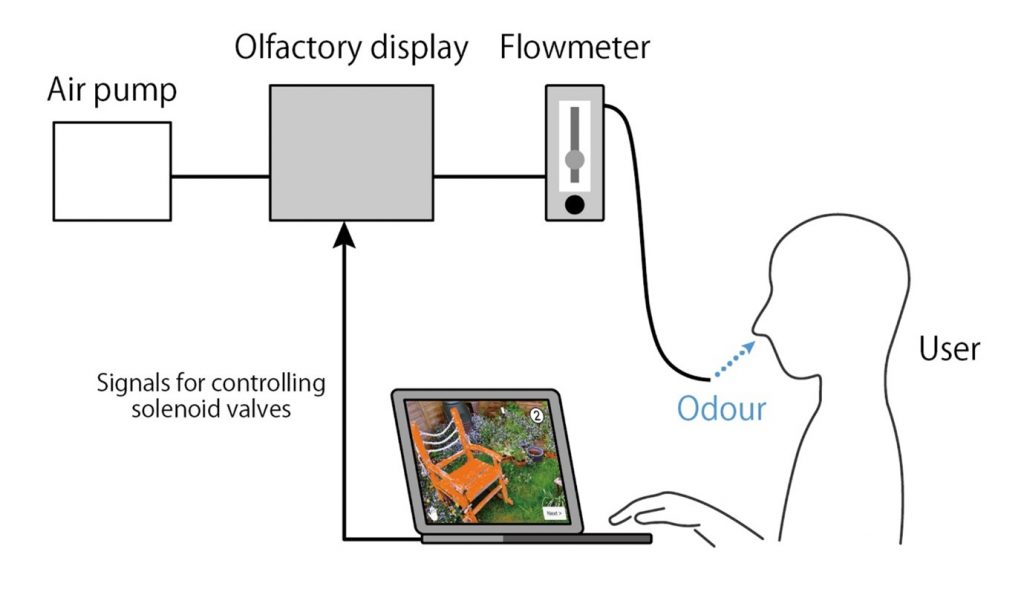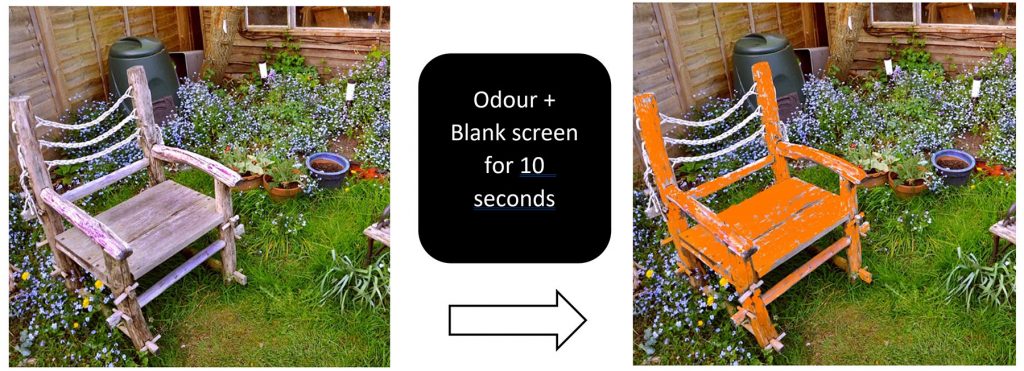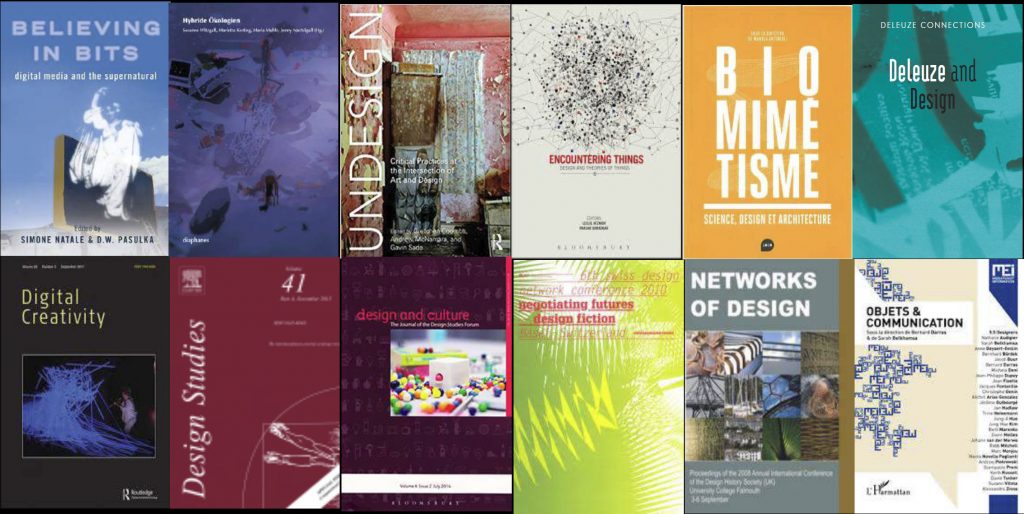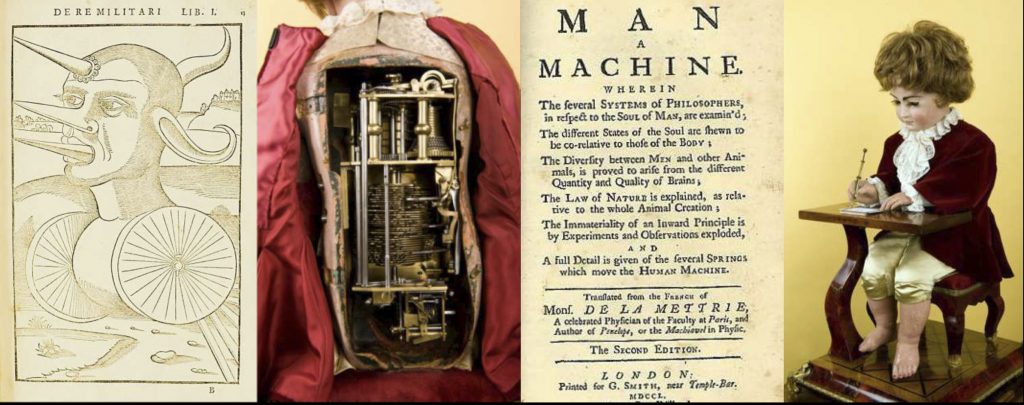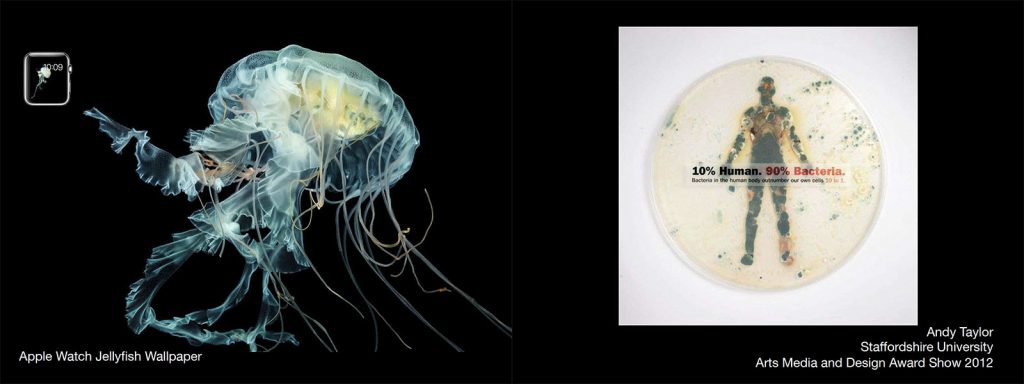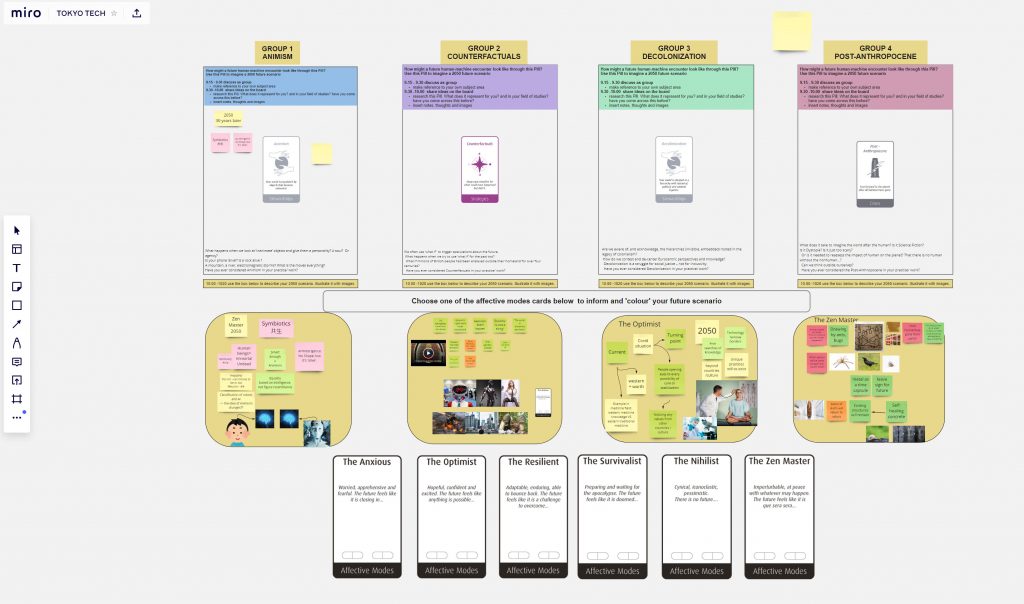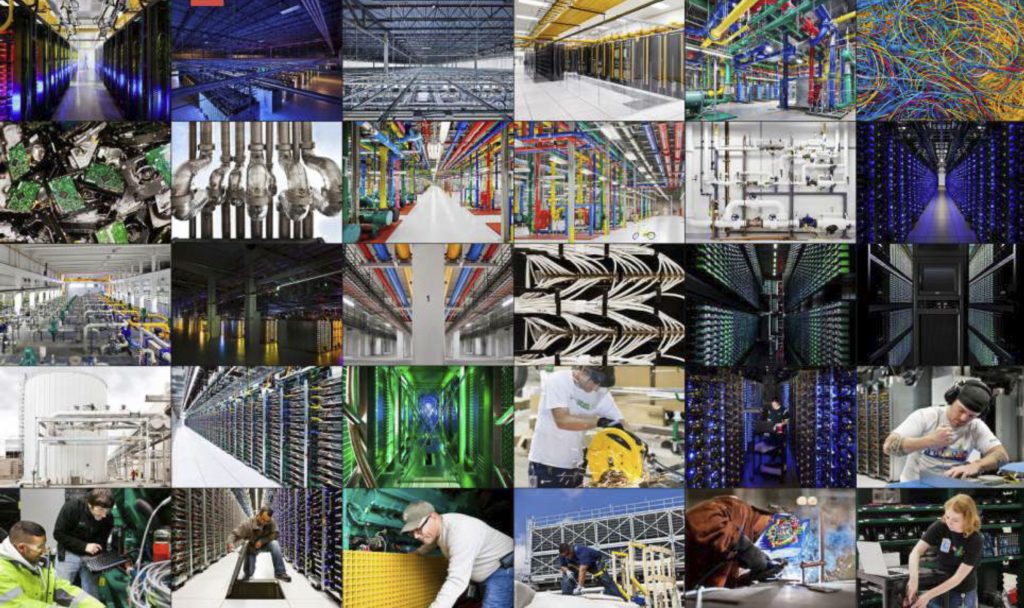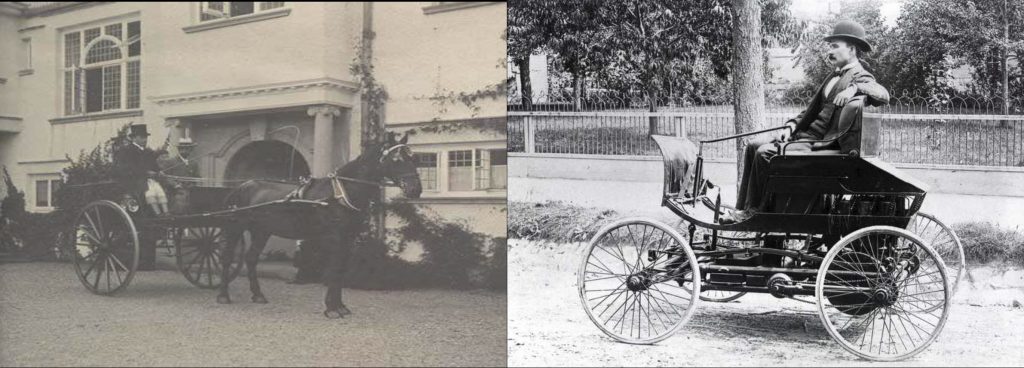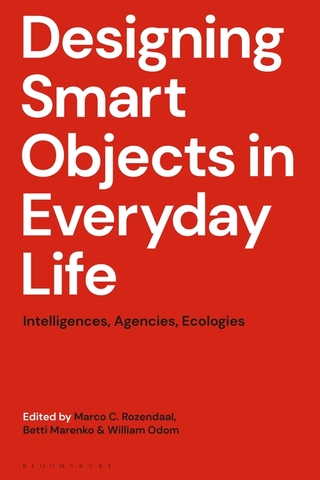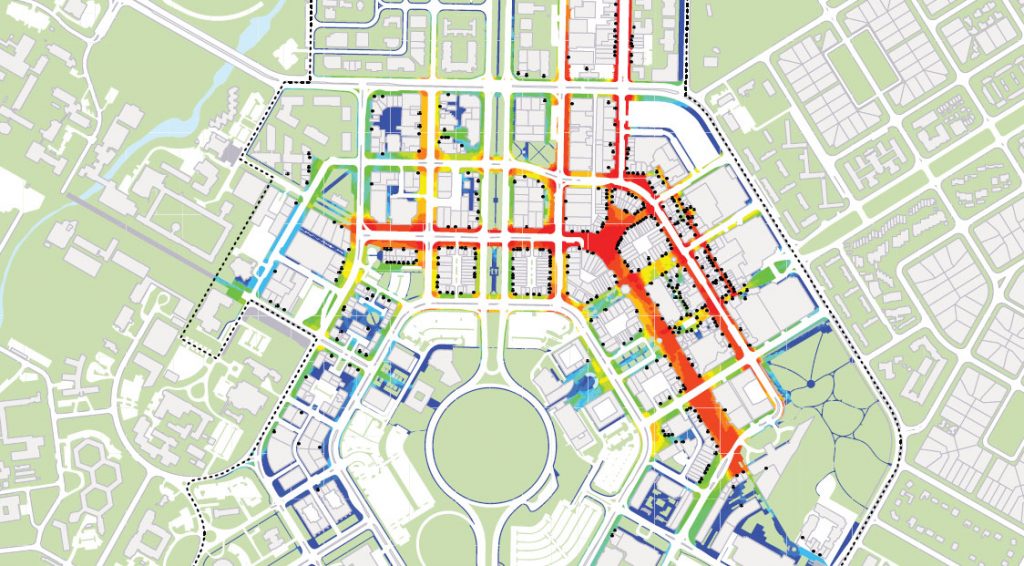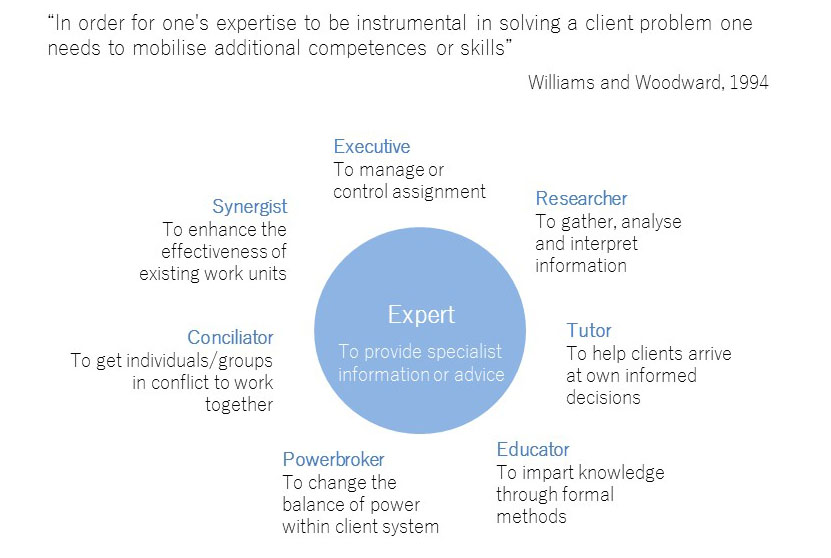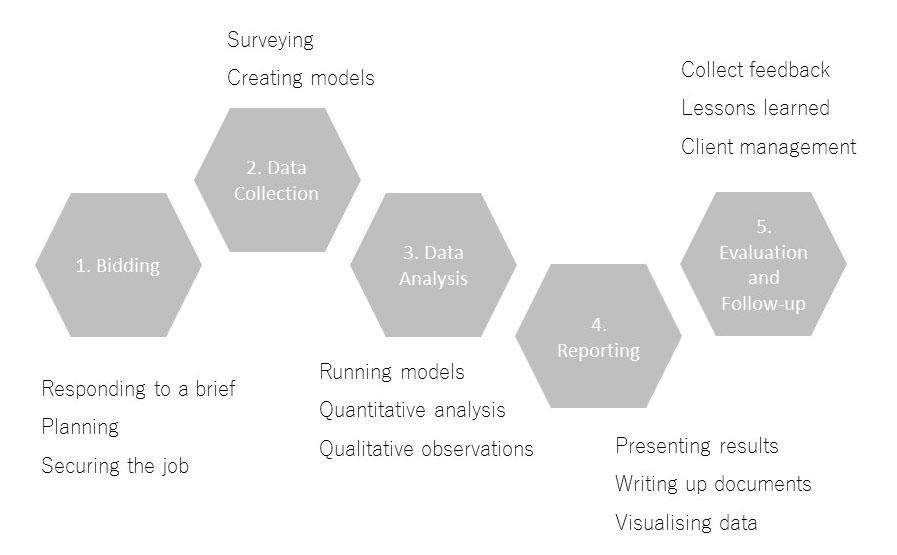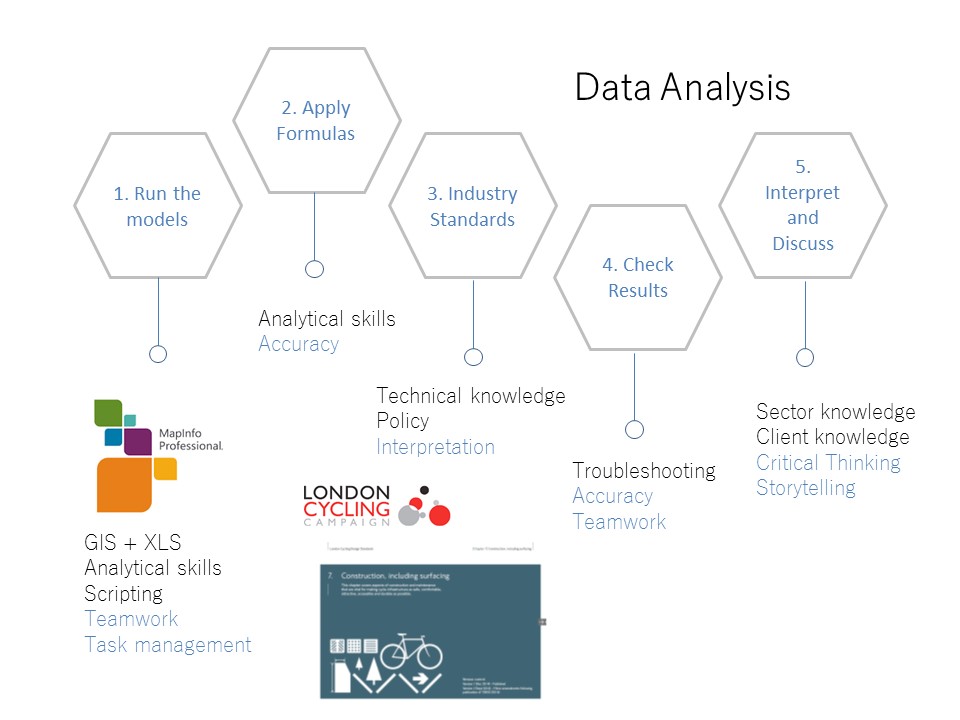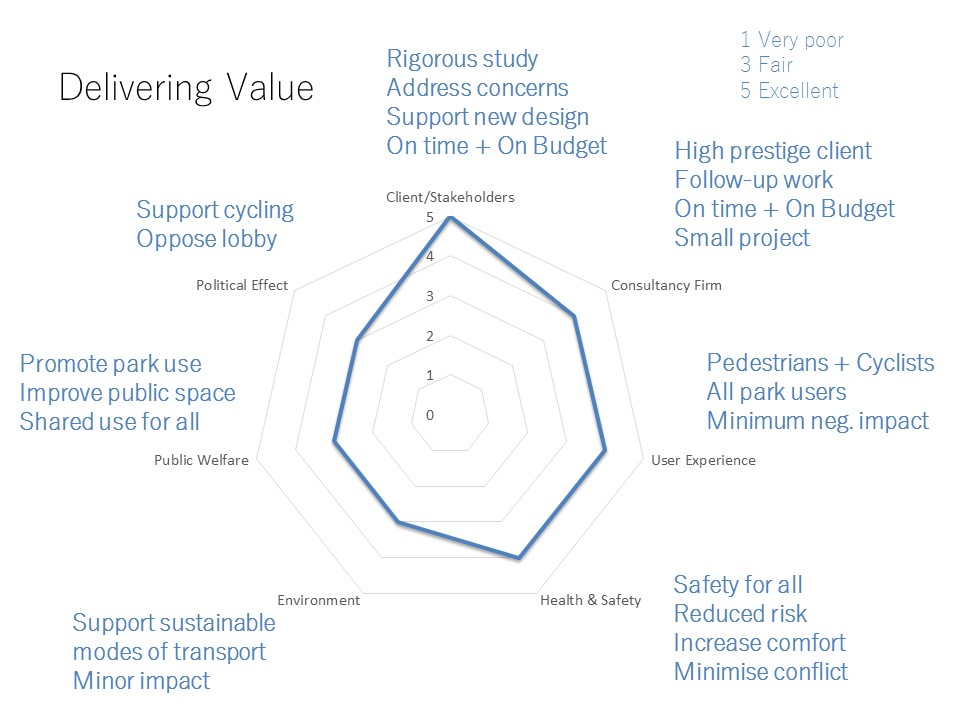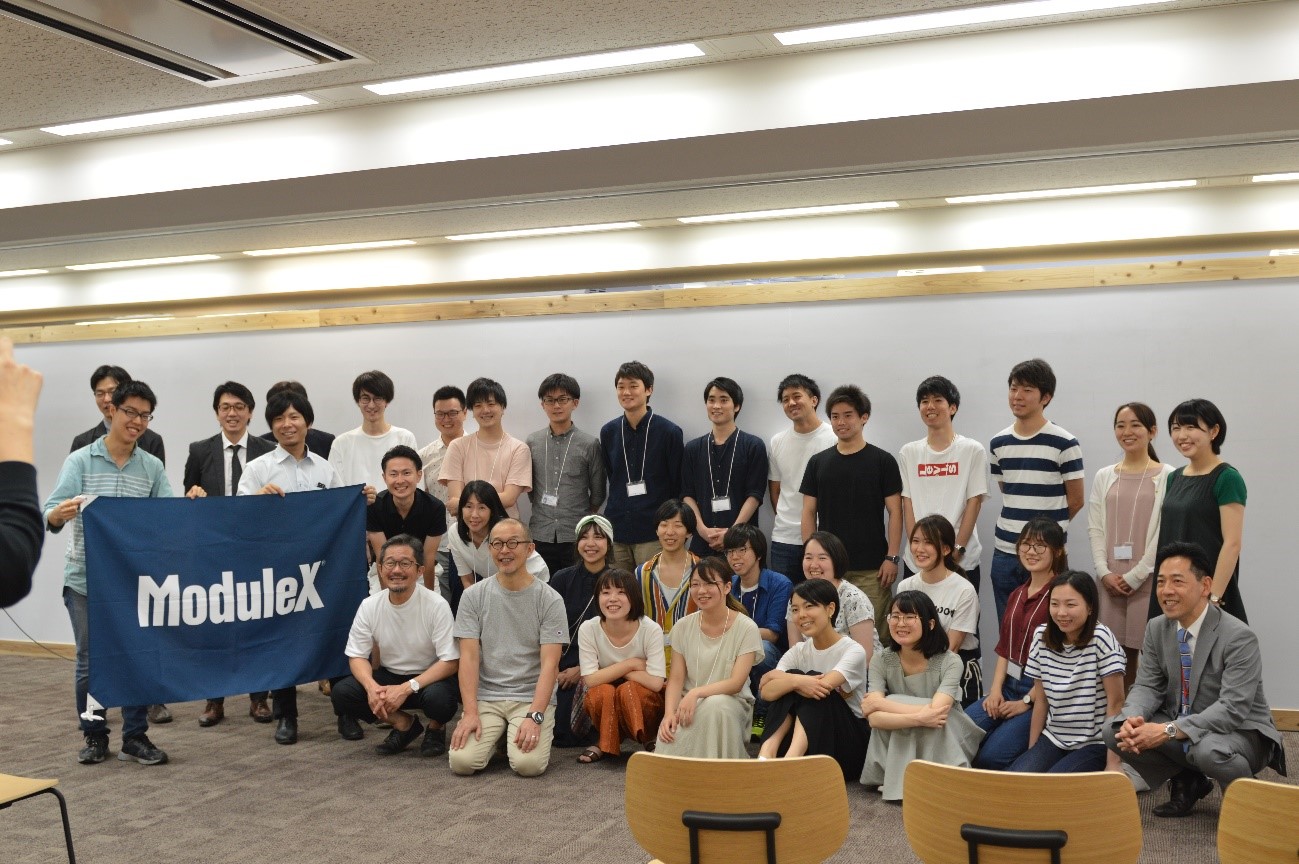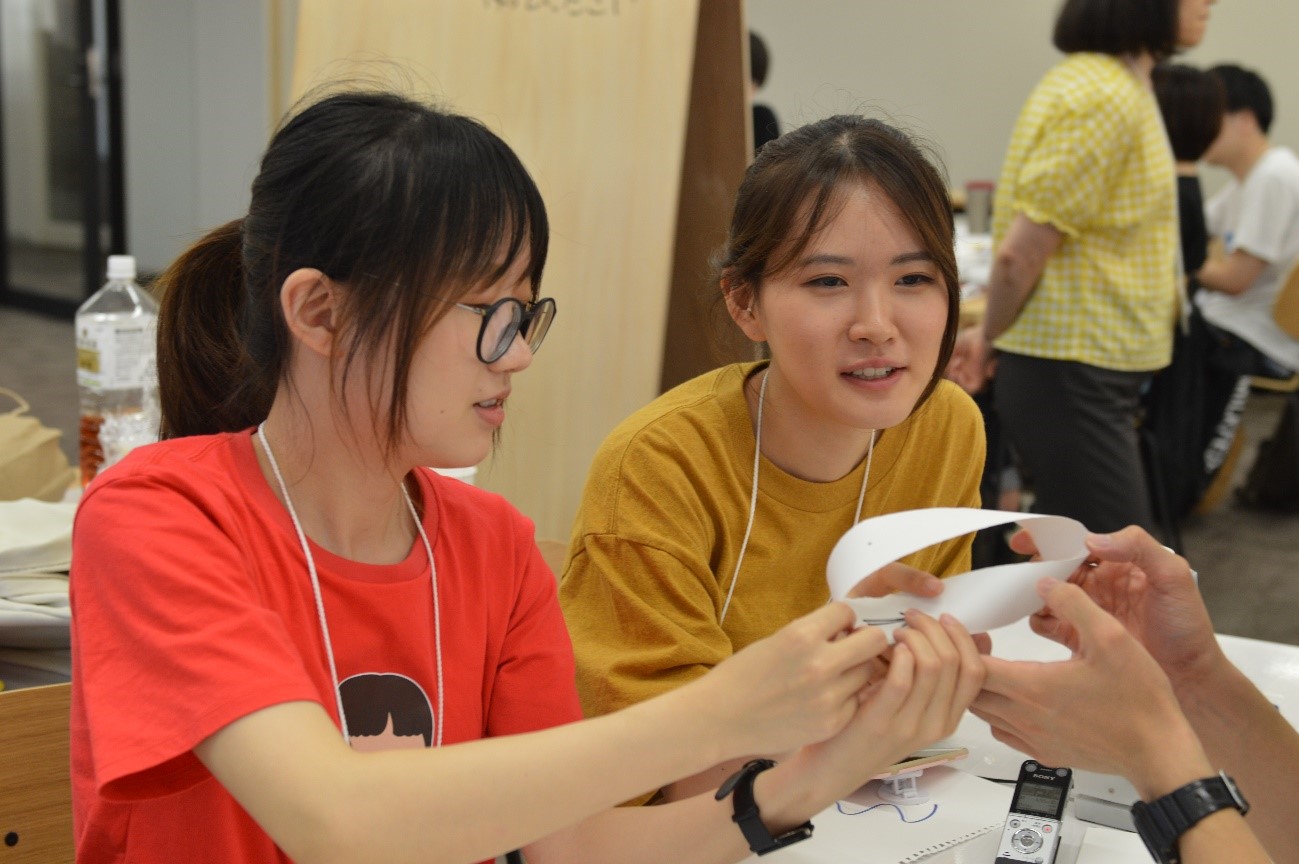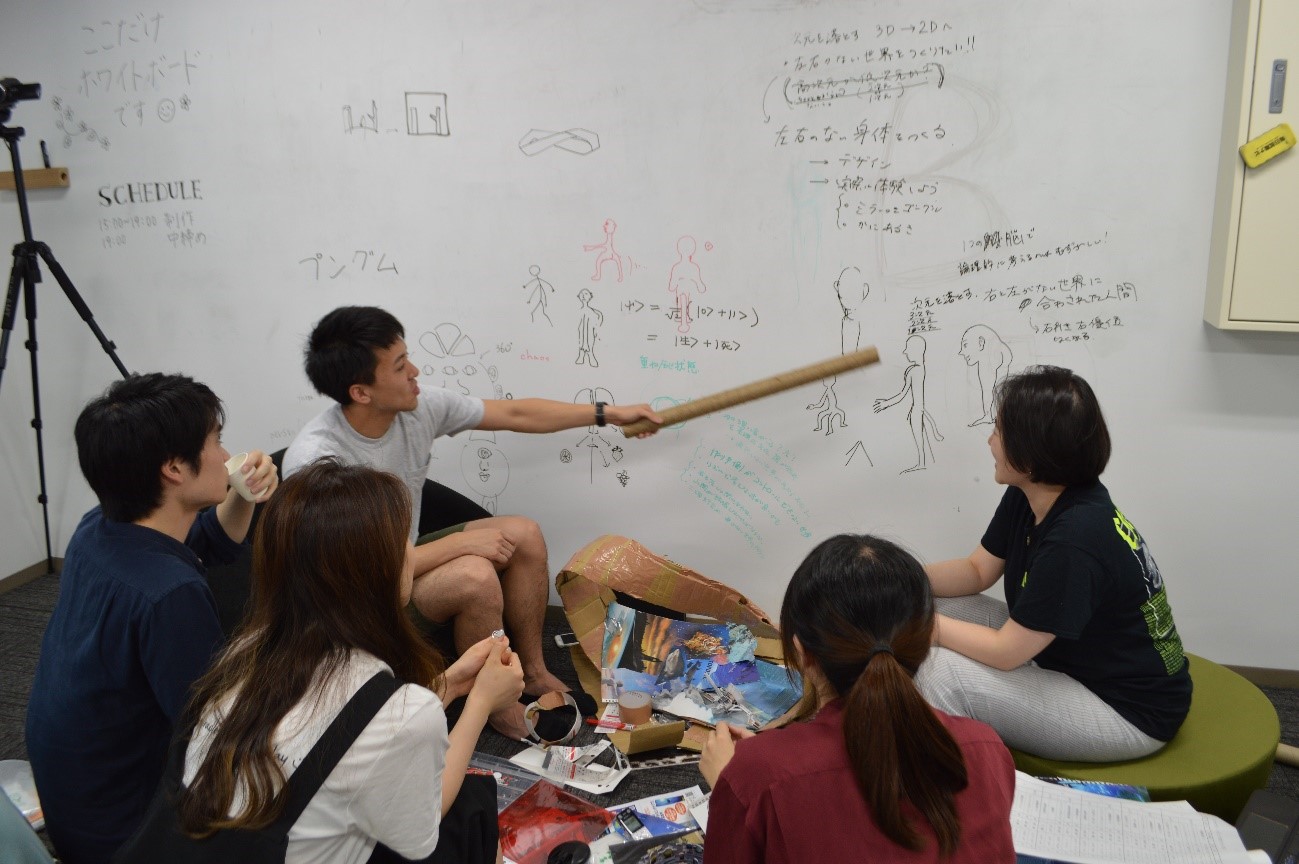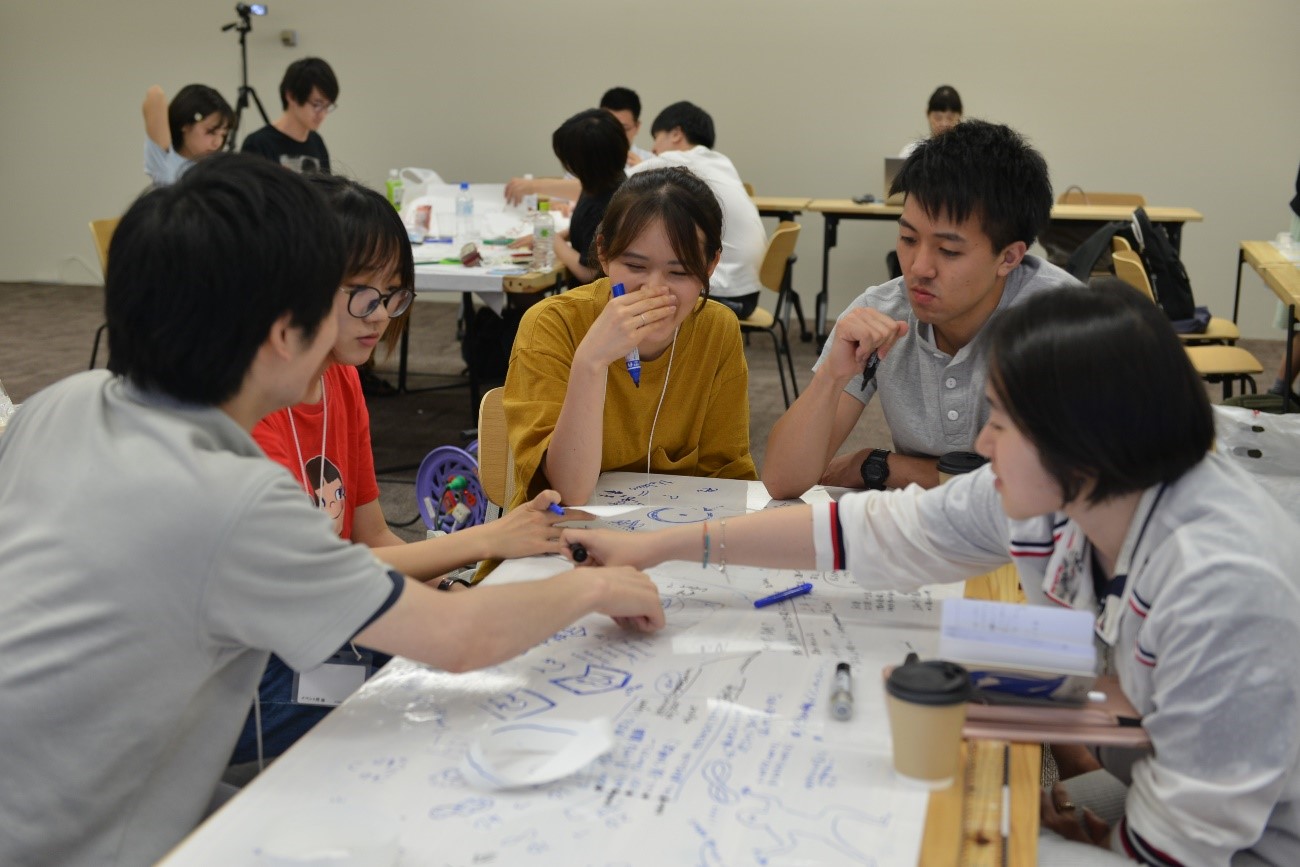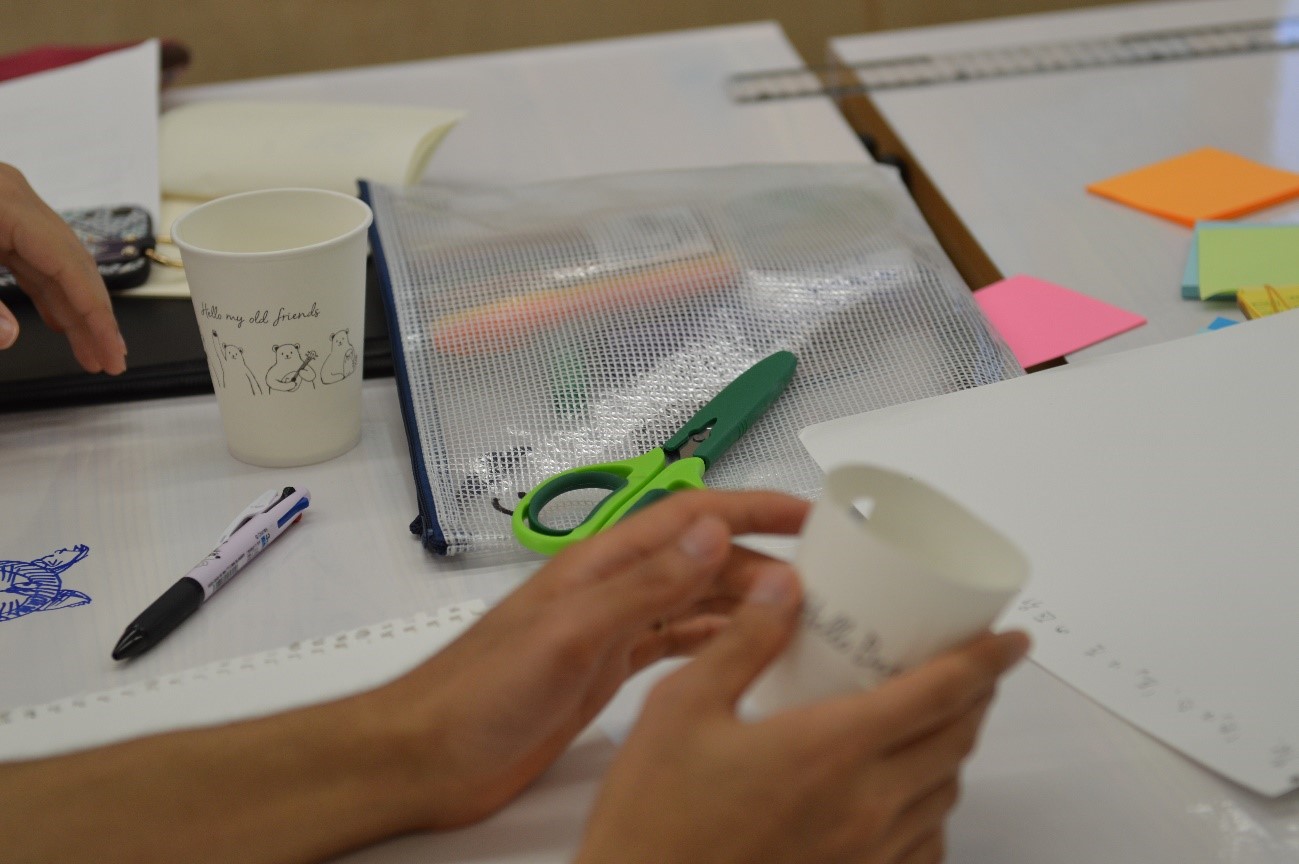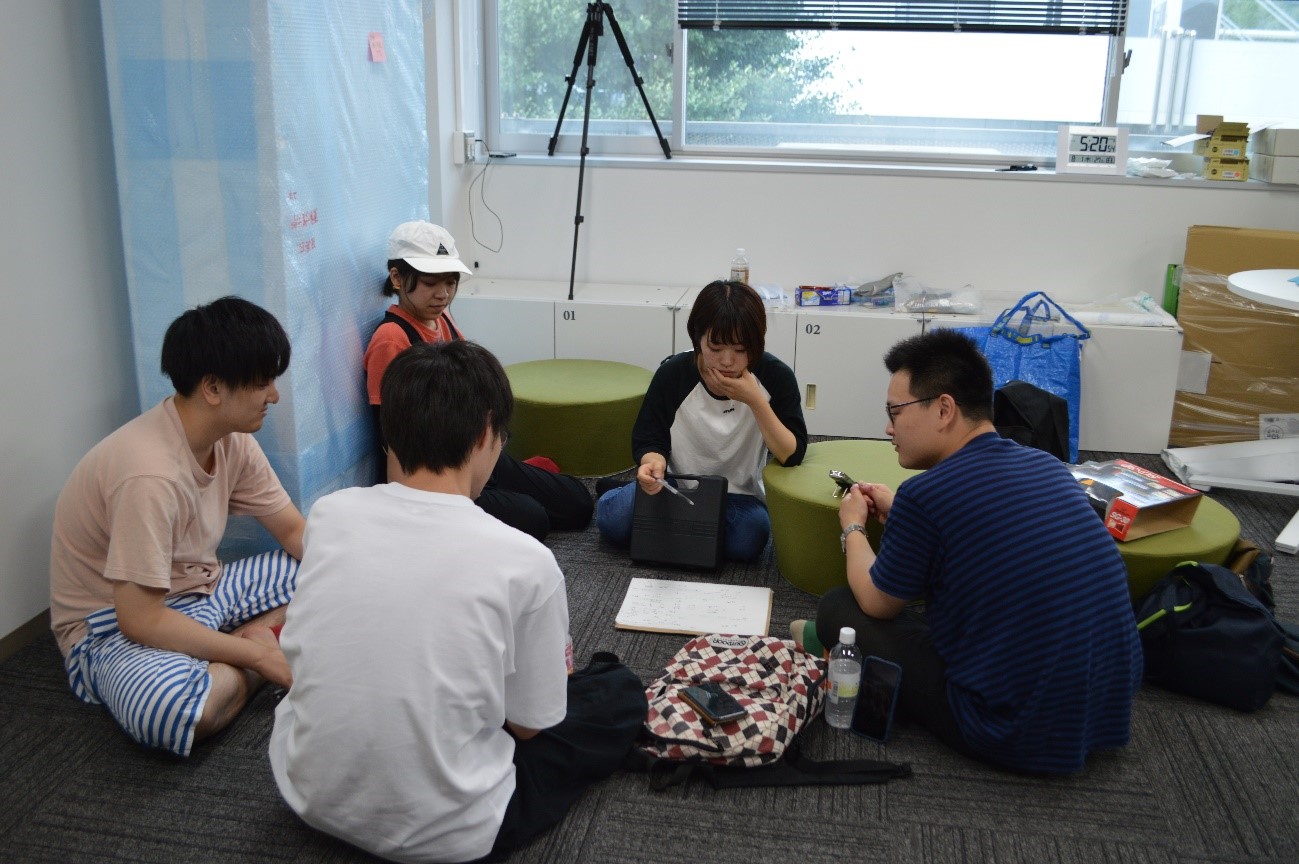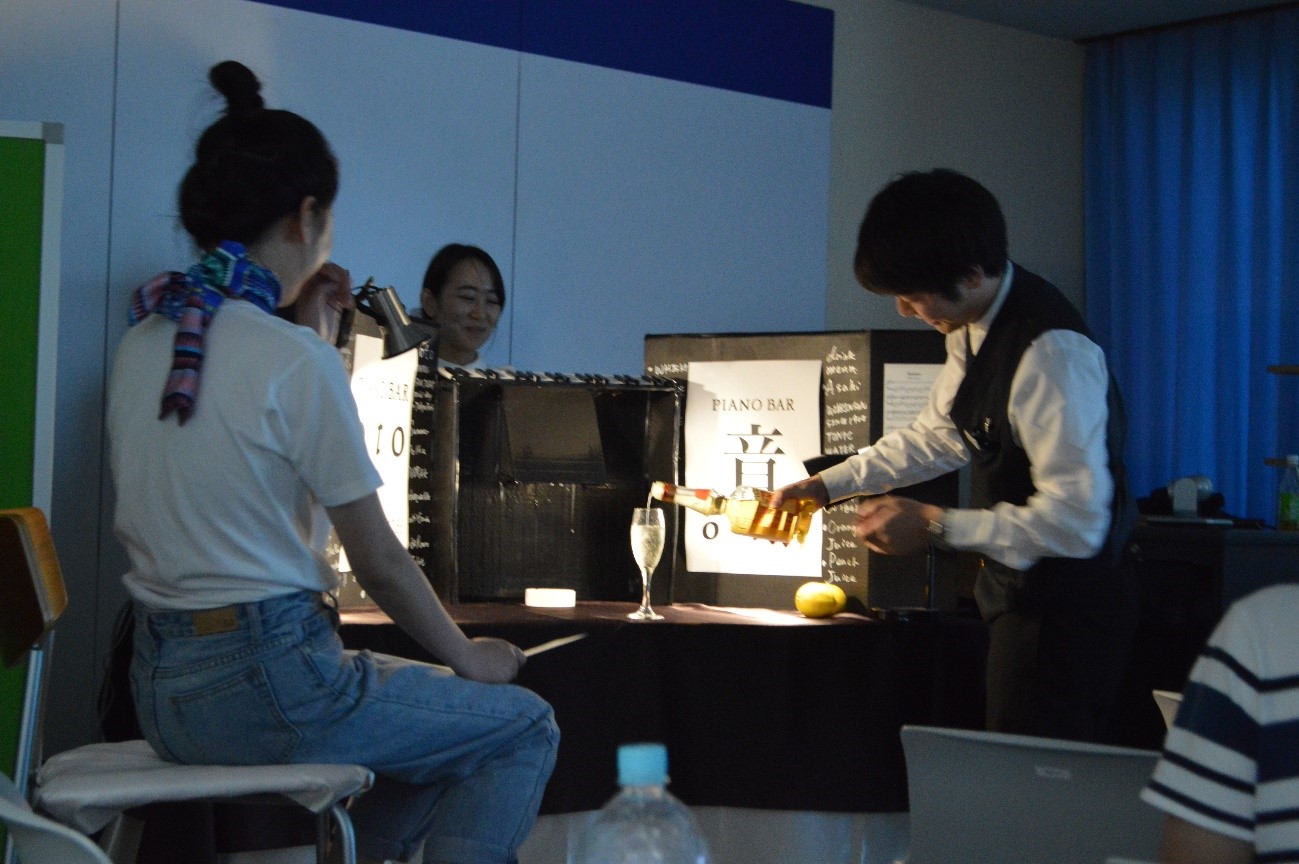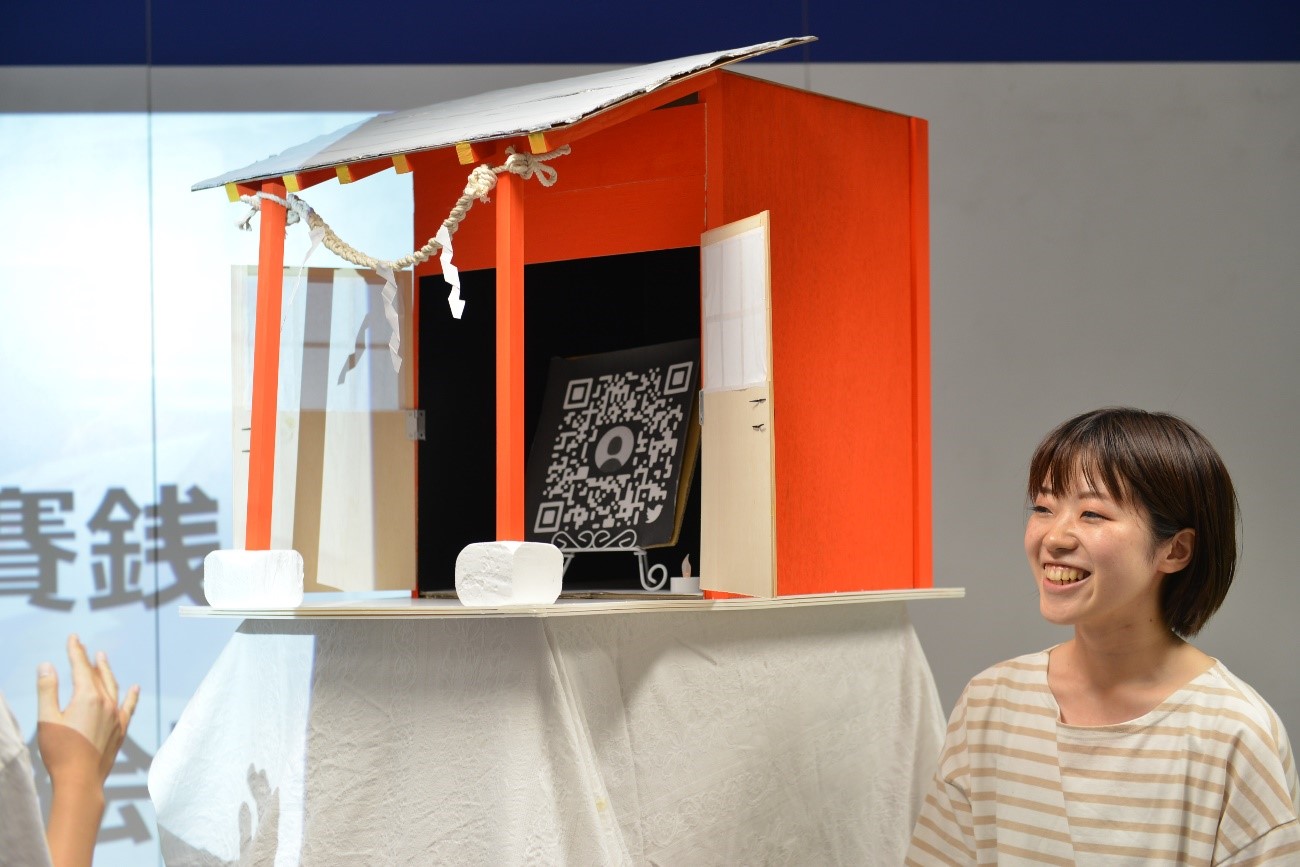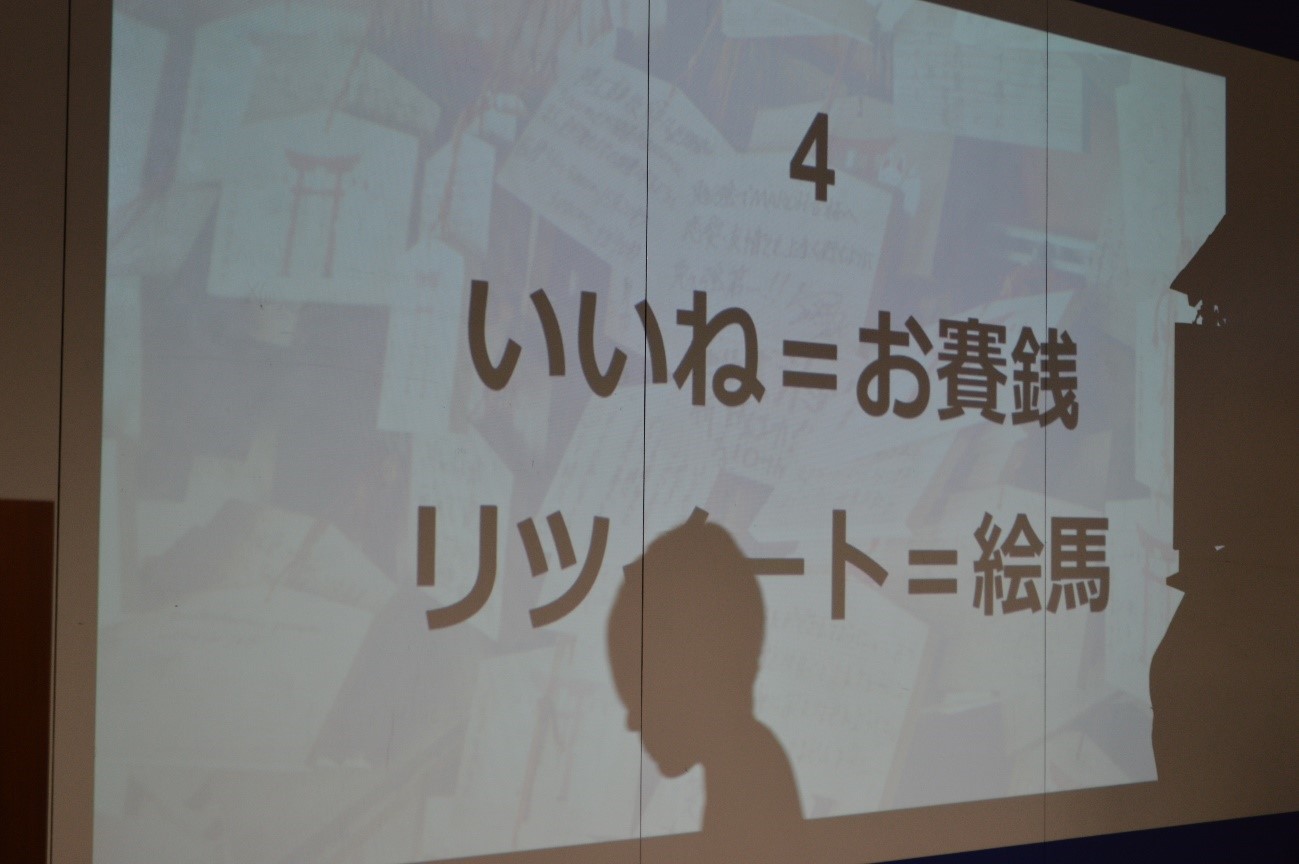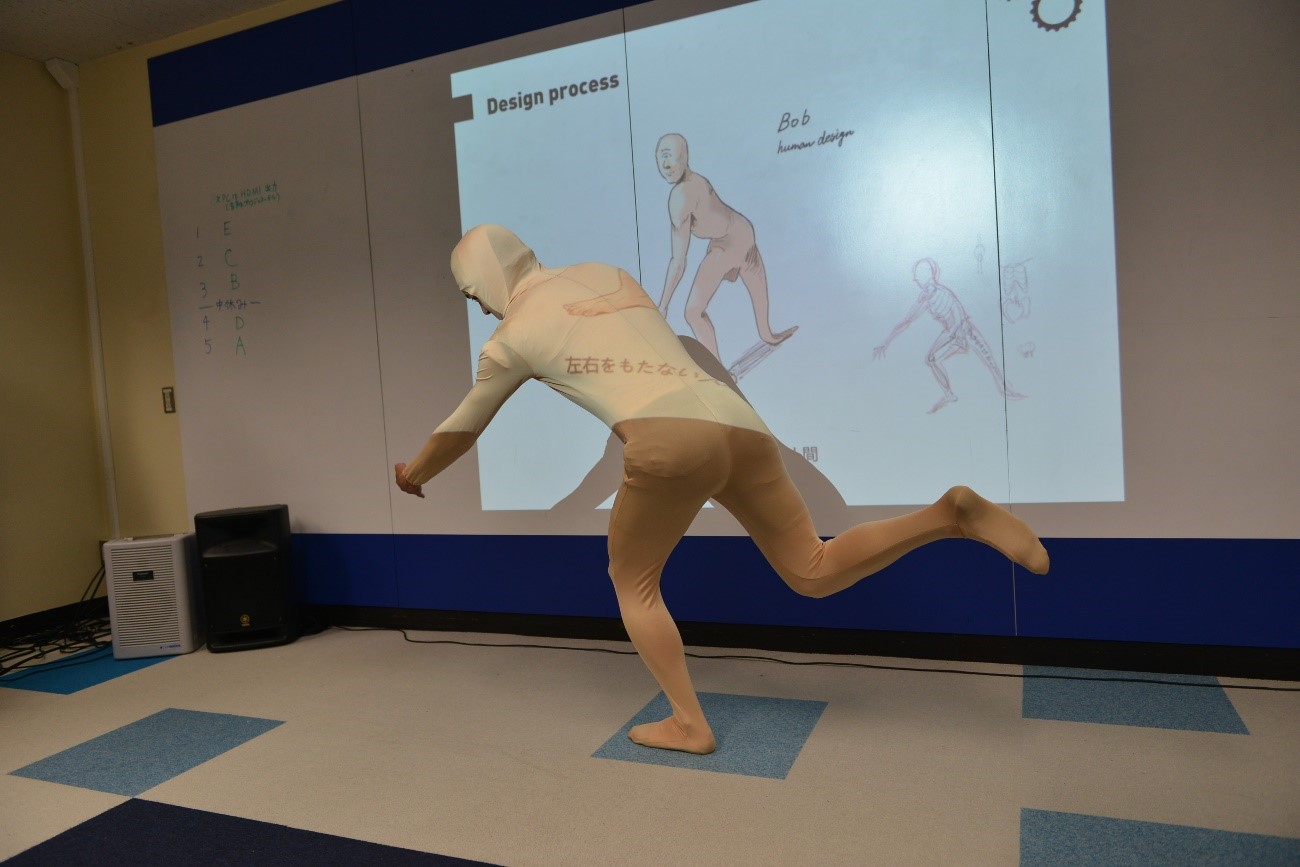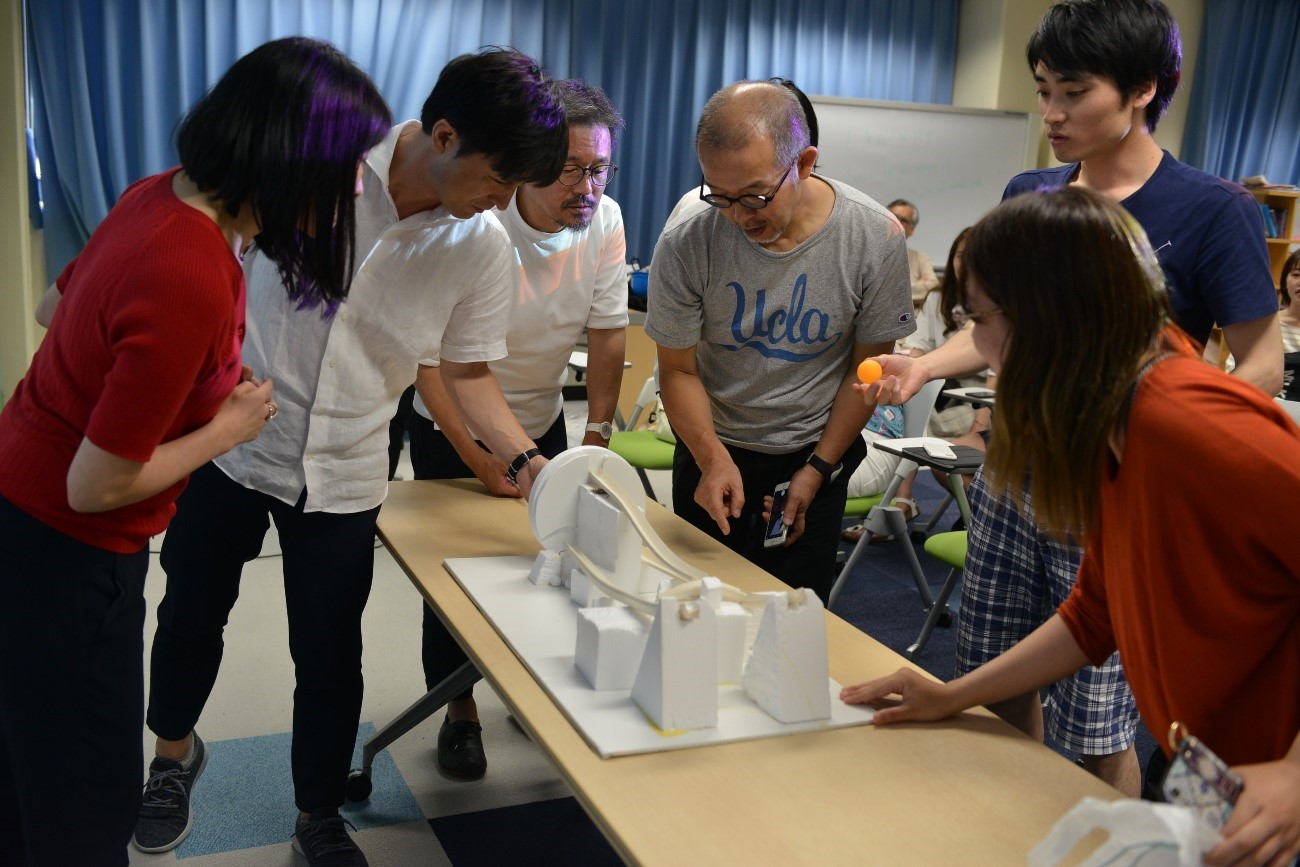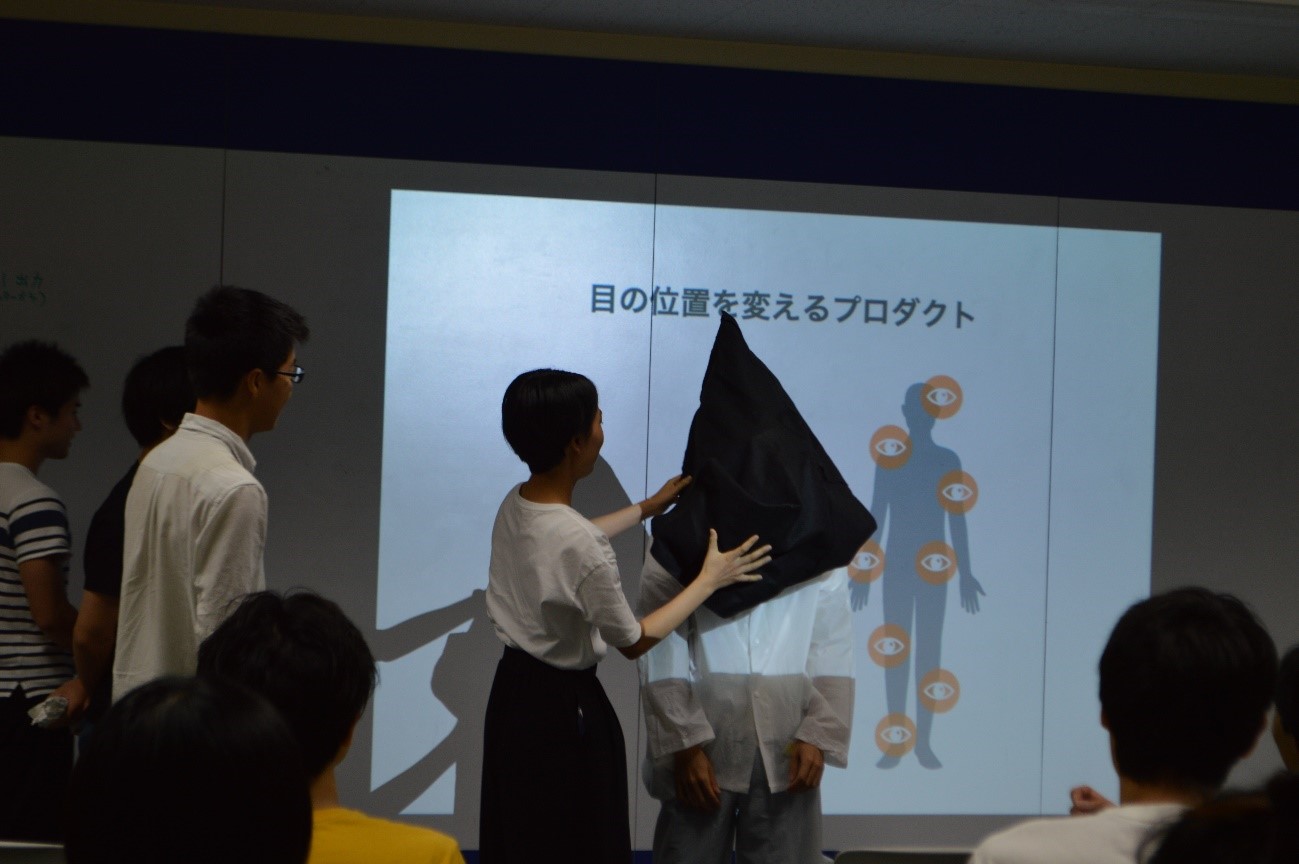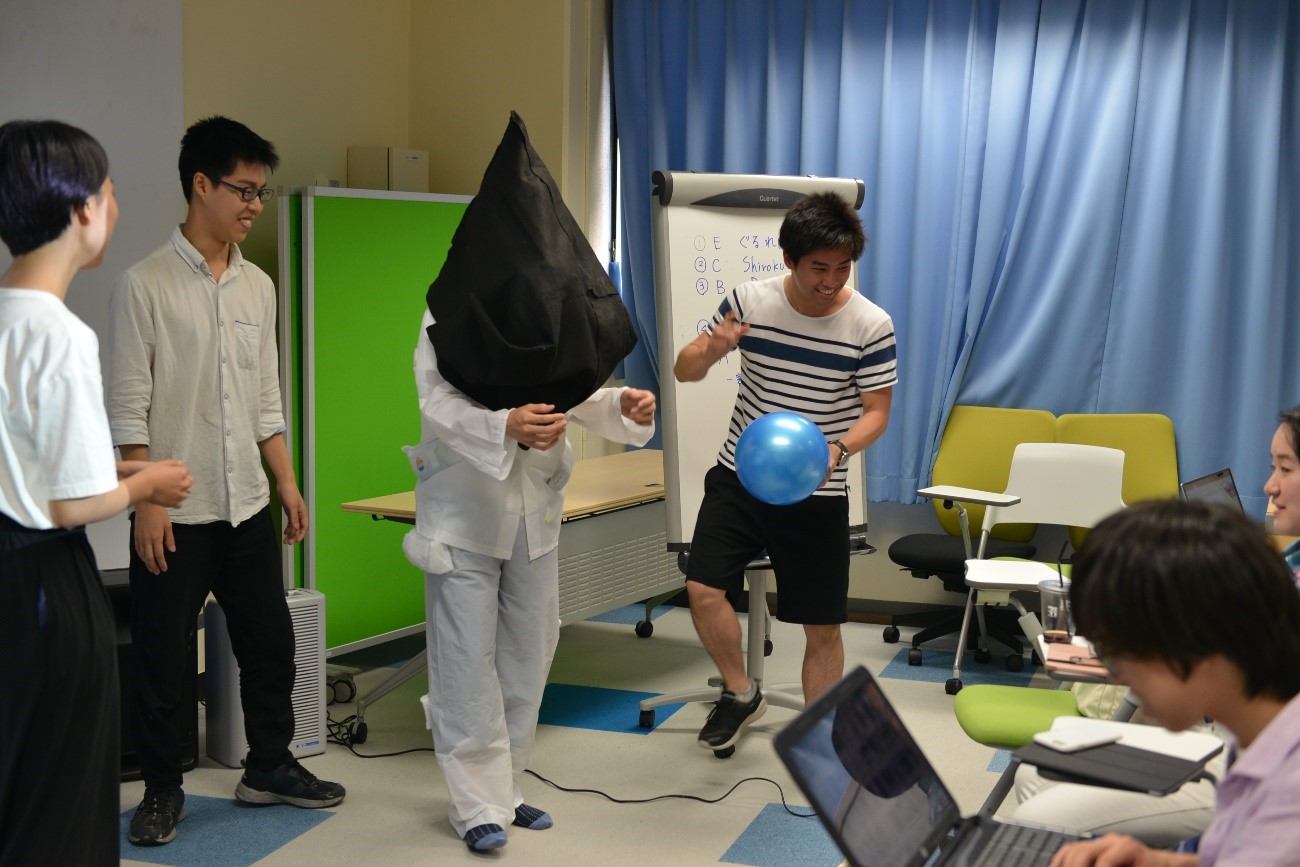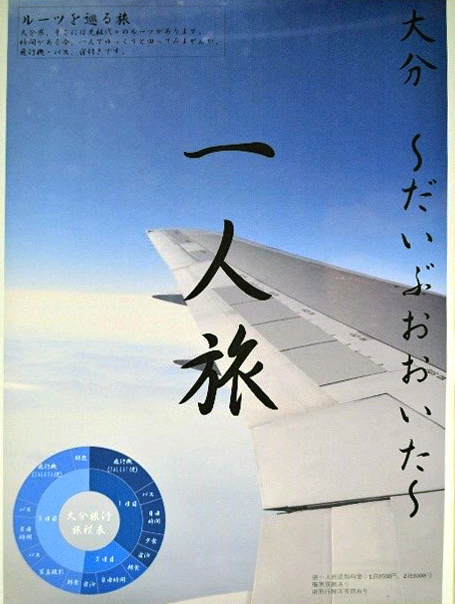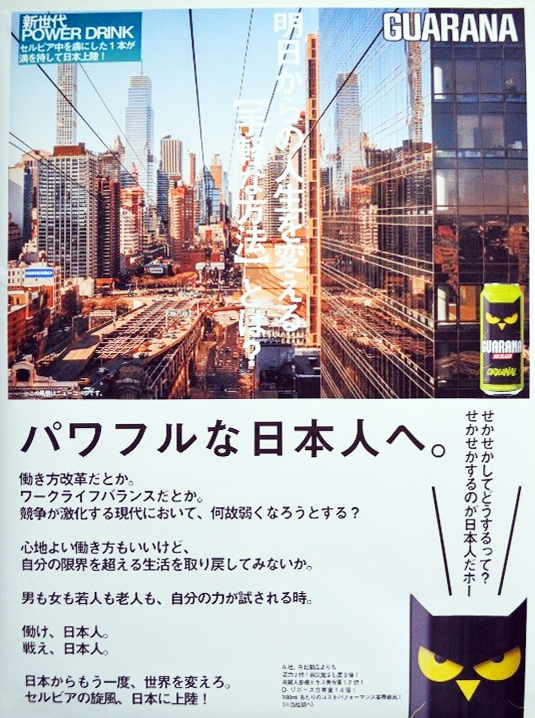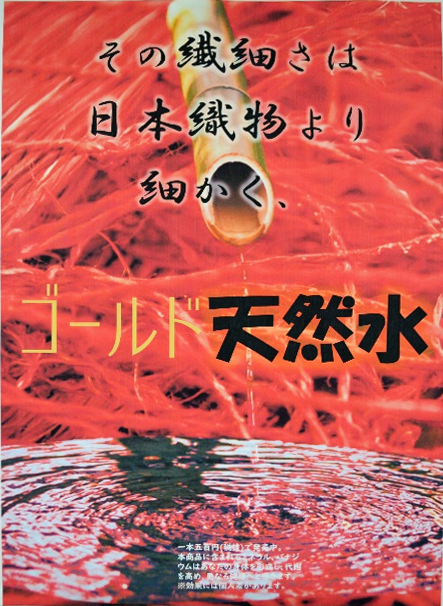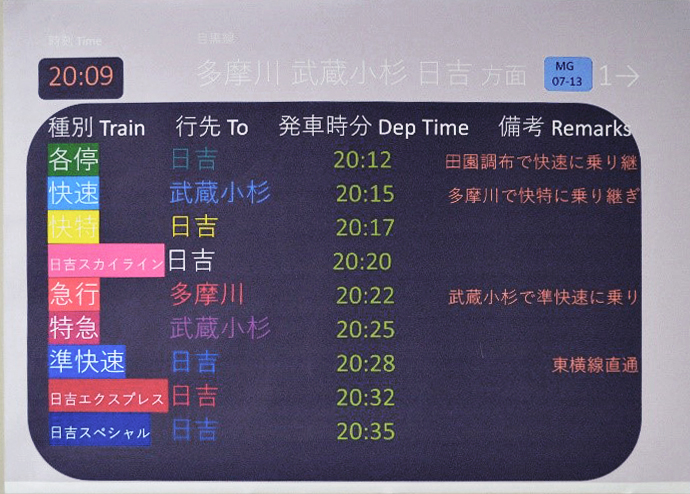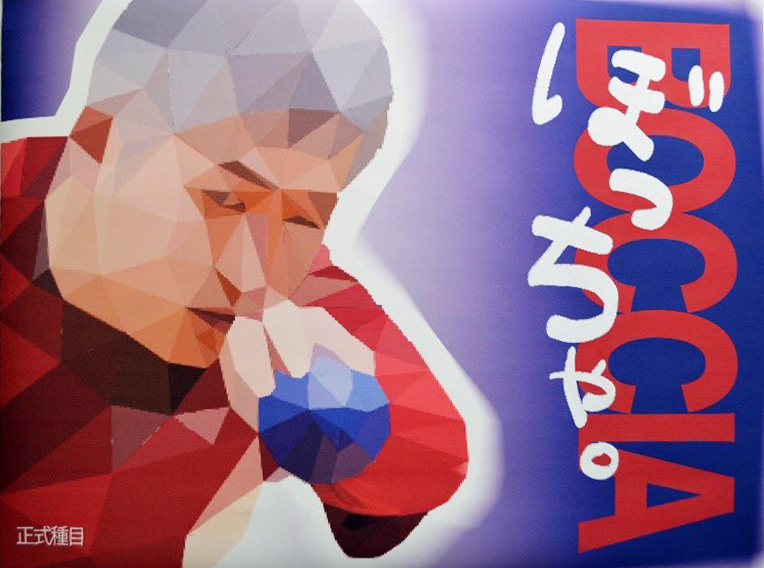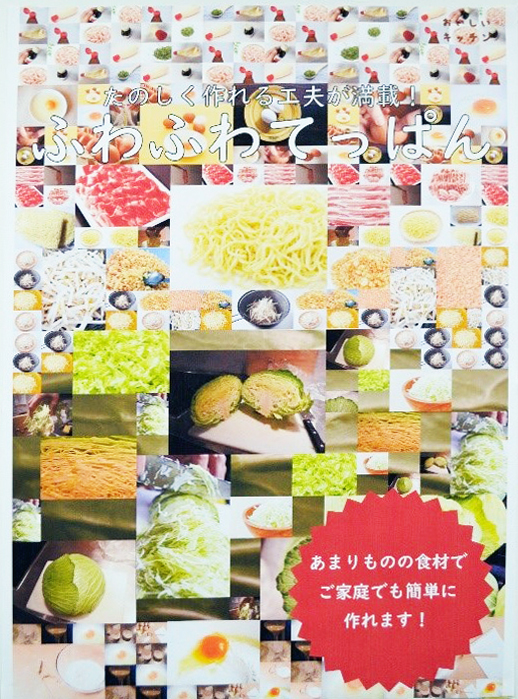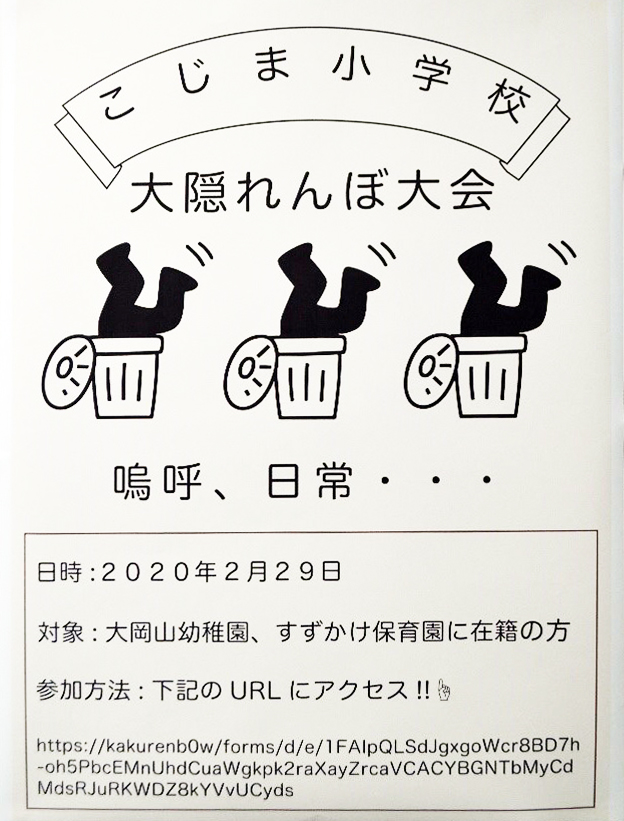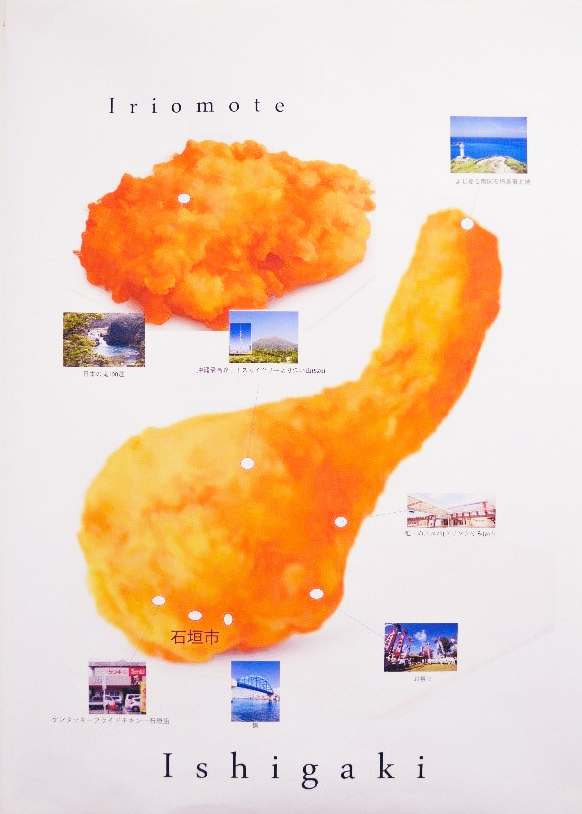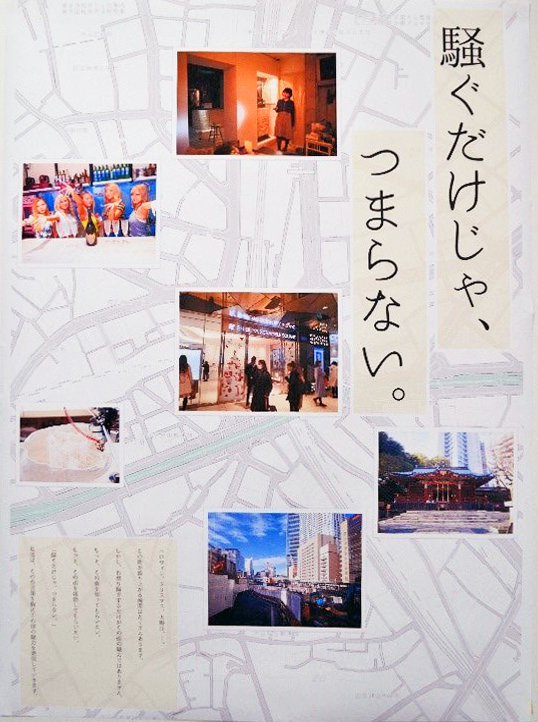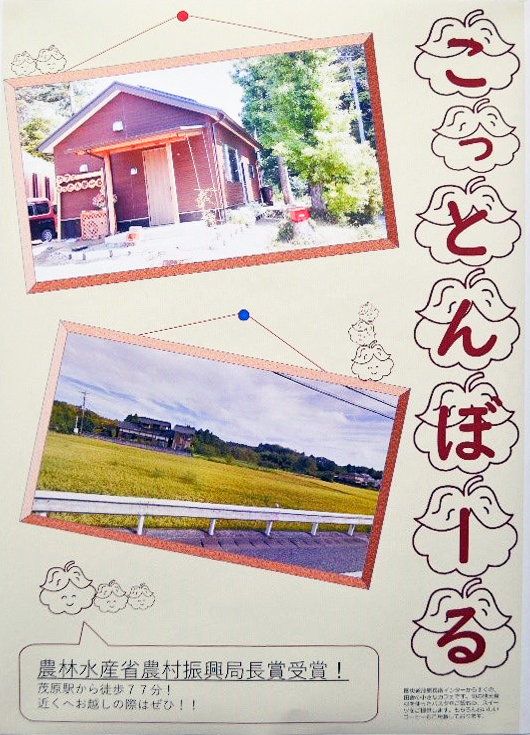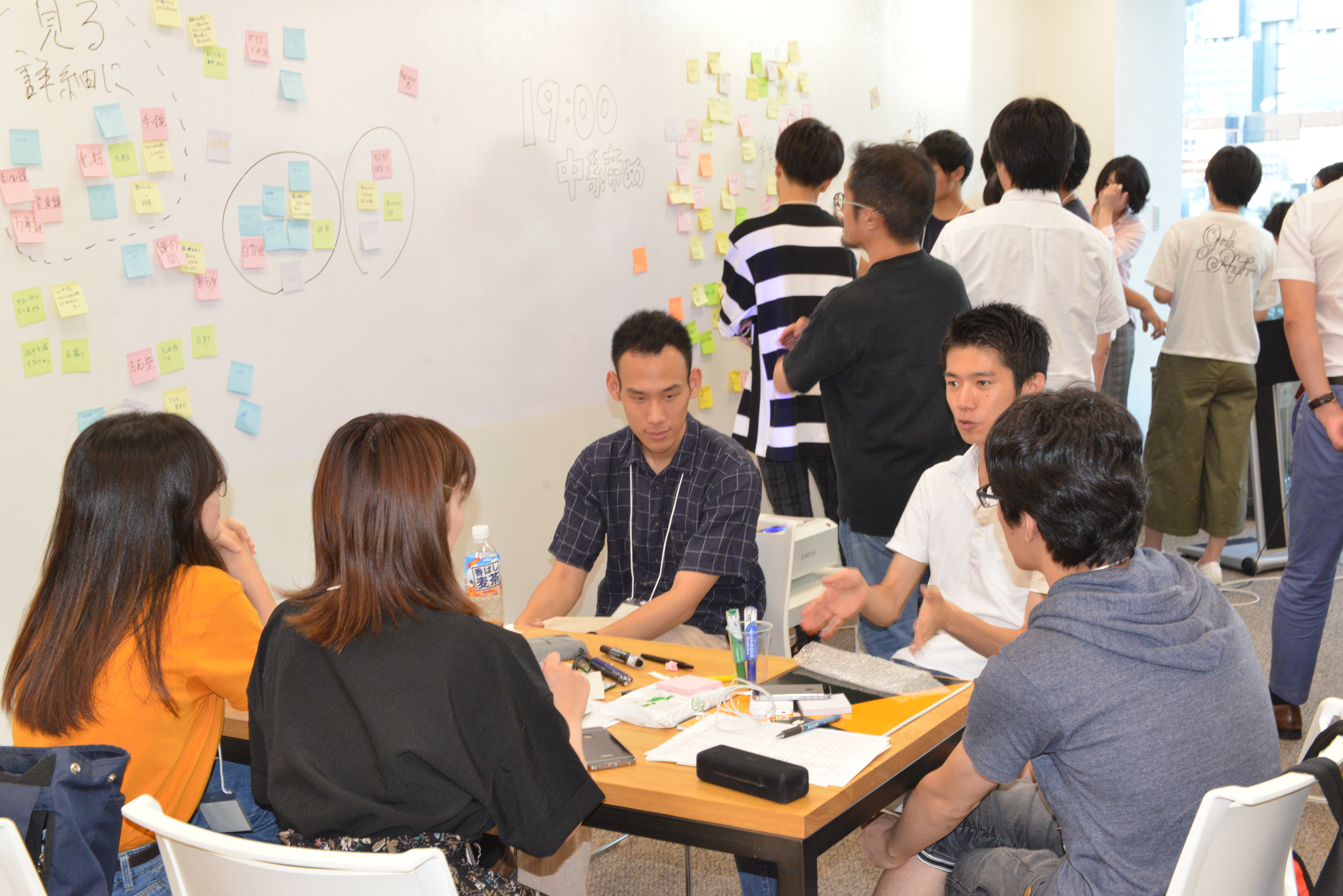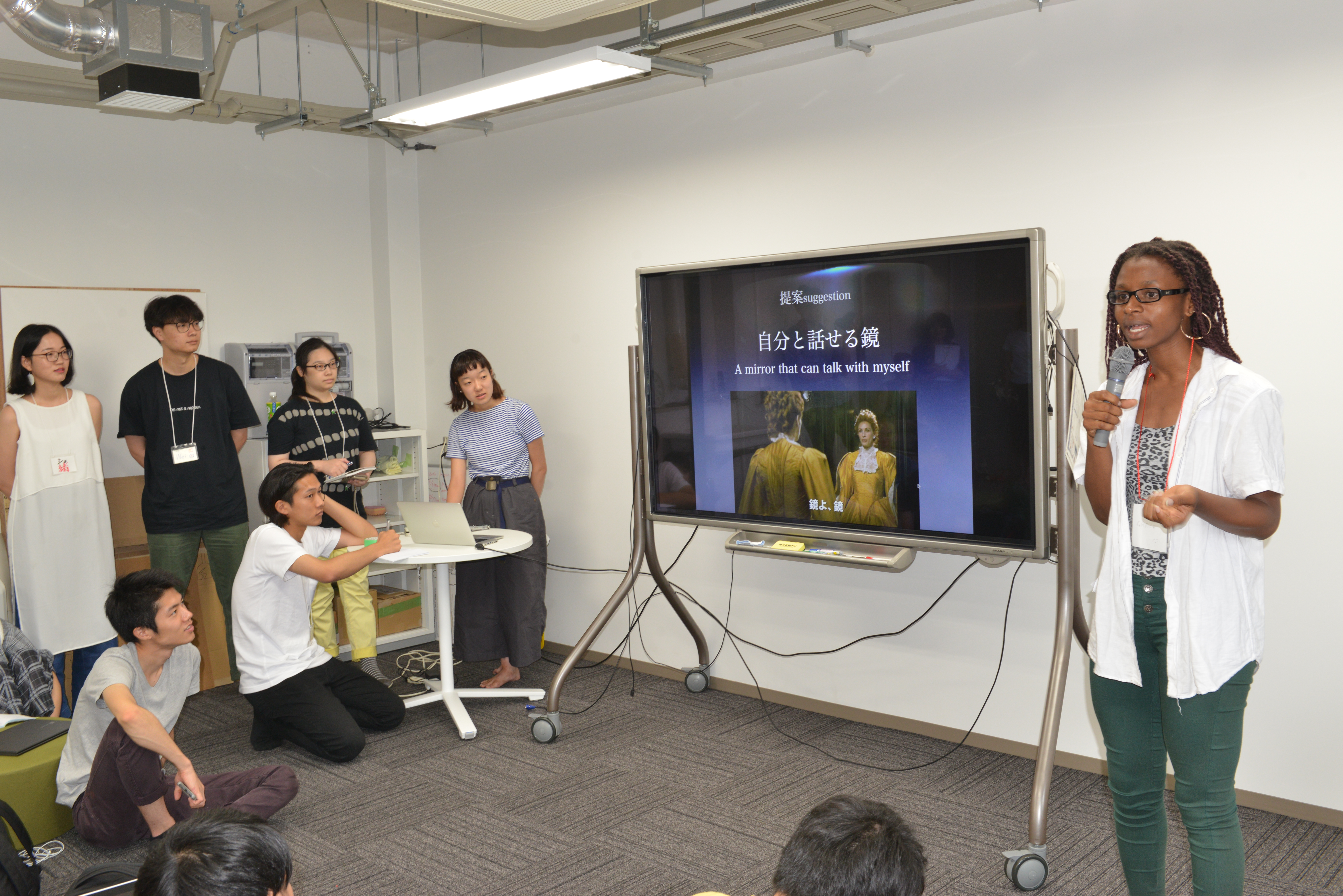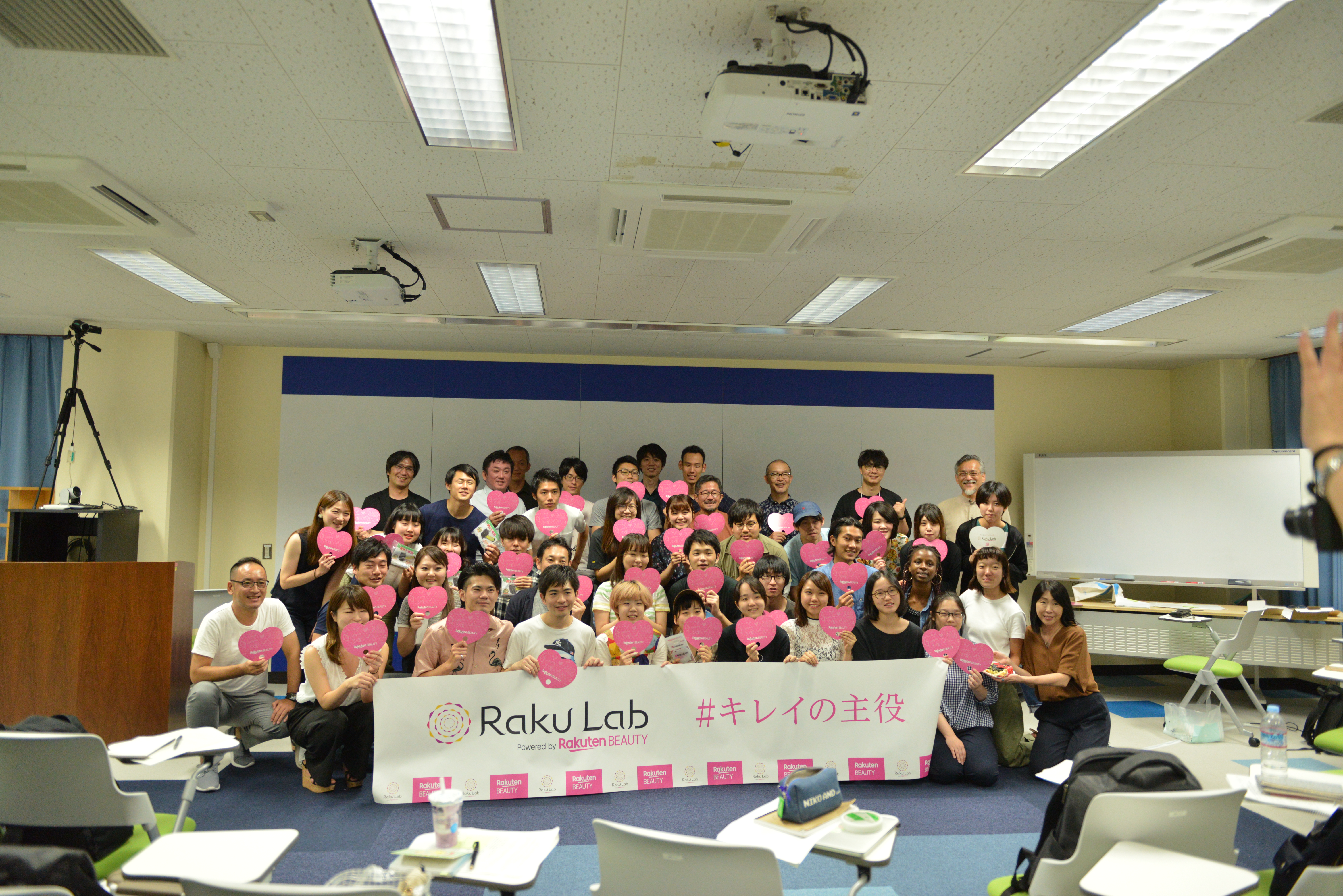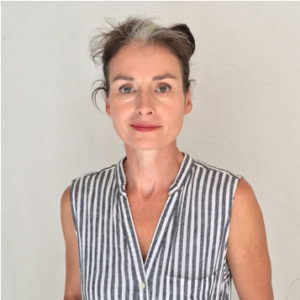2022 年度は新型コロナウイルスの流行が徐々に落ち着き、対面での活動に少しずつ活気が戻ってきた一年でした。この記事と次の記事では、2022 年度に環境・社会理工学院において超学際を推進する融合理工学系で、 野原研究室が主体となって取り組んだサイエンス/テクノロジー&アート/デザインに関する 2 つの教育活動をご紹介します。
東京工業大学×武蔵野美術大学合同ワークショップ「コンセプト・デザイニング」
2022 年 7 月 25 日〜30 日に、東京工業大学と武蔵野美術大学(以下武蔵美)の合同ワークショップ「コンセプト・デザイニング」が開催されました。2011 年にスタートしたこのワークショップは東工大では集中講義(地球環境共創コース専門科目)として開講されおり、他コースからの希望者も多く毎年履修に抽選が必要となる人気講義です。6 日間のワークショップでは、東工大生と武蔵美生がチームを組み、出されたお題から造形物を制作します。お題の解釈から造形物の制作まで、アプローチは無数にあり、絶対的な正解はありません。思考や文化が異なる(かもしれない)東工大生と美大生がお互いの専門性を提供しあうことで、サイエンス/テクノロジーとアート/デザインを融合させながら創造性を発揮し、最終的に一つの作品を生み出します。この過程でチームメンバーそれぞれがコミュニケーションの楽しさや難しさに向き合い、多角的にテーマ/コミュニケーション/プロセスを体験できることがこのワークショップの醍醐味です。
新型コロナウイルスの影響で 3 年ぶり 11 回目の開催となった 2022 年度の講義には、東工大生 13 名と武蔵美生 11 名が参加しました。両校の学生は 5 つのチームに均等に振り分けられ、そのうち 1 つは英語でコミュニケーションを行うグローバルチームでした。
今回のお題は「ふる ふれる」。例年、「想いが伝わるラブレター」「オトナとコドモ」「くりかえす」「ながいもの」「恋」「鏡」「右 左」など、なんとも掴みどころのない、禅問答のようなお題が出されるのもこのワークショップの特徴です。
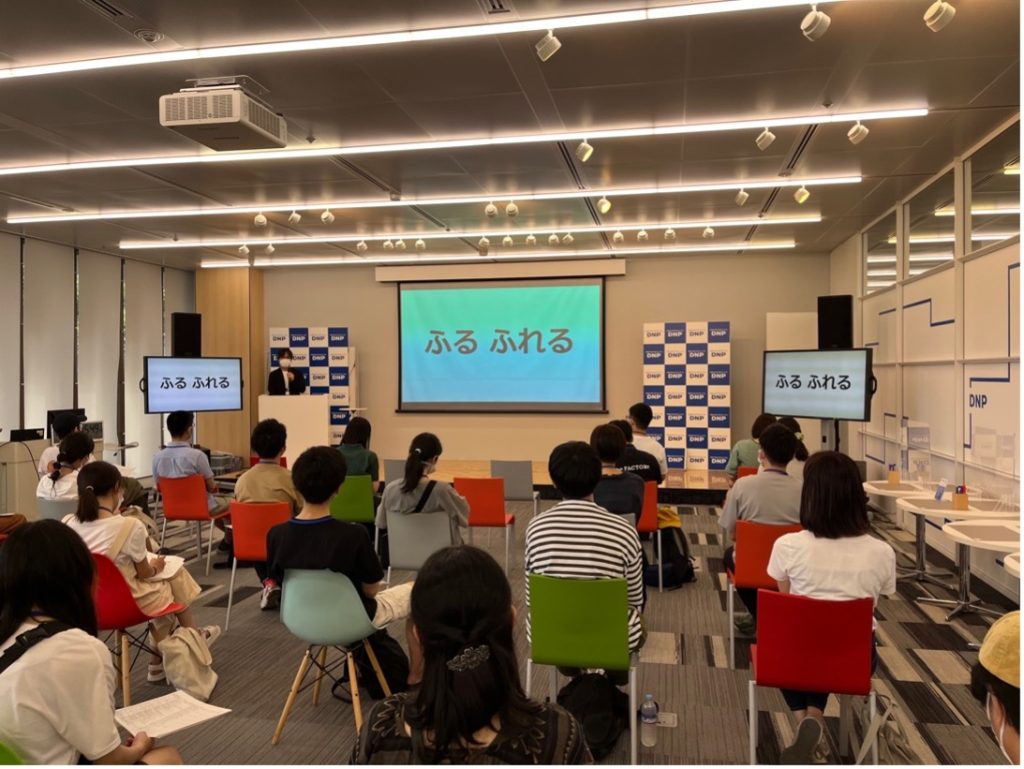
今年のお題は「ふる ふれる」
| 日付 | 内容 |
| 7 月 25 日 | 講義「デザイン思考」(武蔵野美術大学 古堅真彦教授) 講義「『他とふれる』ところでコミュニケーションをずらす」(東京工業大学 野原佳代子教授) お題発表 |
| 7 月 26 日 | 講義「美術的思考?」(武蔵野美術大学 袴田京太朗教授) 講義「カーボンニュートラルと鉄鋼」(東京工業大学 須佐匡裕教授) グループディスカッション |
| 7 月 27 日 | DNP 見学 グループディスカッション |
| 7 月 28 日 | 中間発表会 グループディスカッション・制作 |
| 7 月 29 日 | グループディスカッション・制作 |
| 7 月 30 日 | 最終発表会 |
ワークショップの日程はこの通り。前半 3 日間は武蔵野美術大学市ヶ谷キャンパス近隣の DNP プラザ(大日本印刷株式会社協賛)で講義とグループディスカッションを行い、後半 3 日間は東工大大岡山キャンパスに場を移し、中間発表会を挟んで制作を行いました。
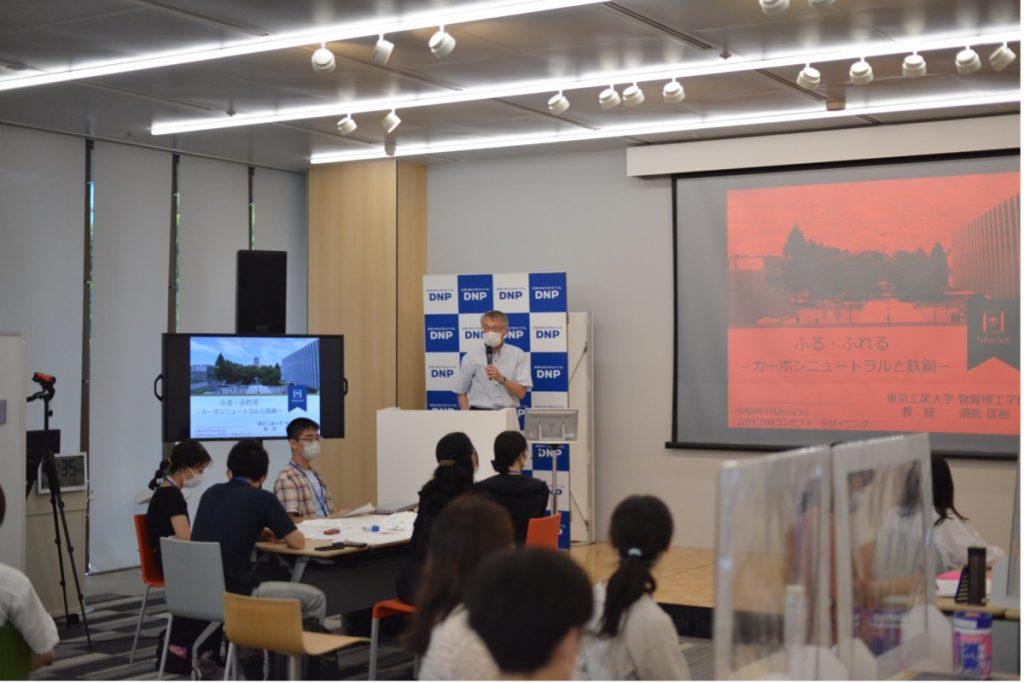
須佐先生の講義
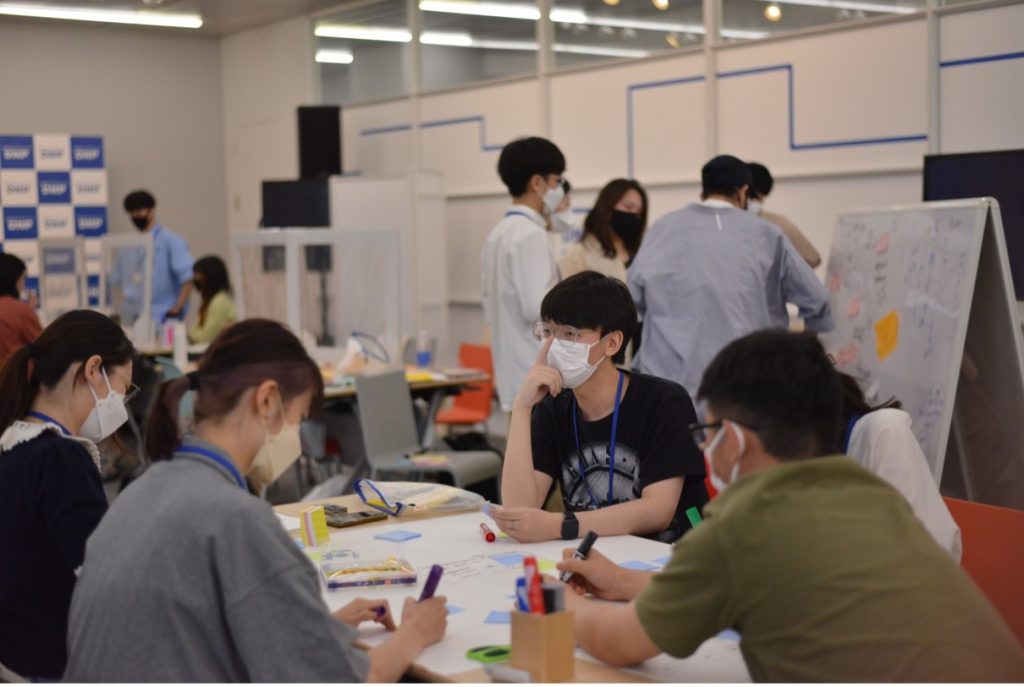
DNPプラザでのグループディスカッション
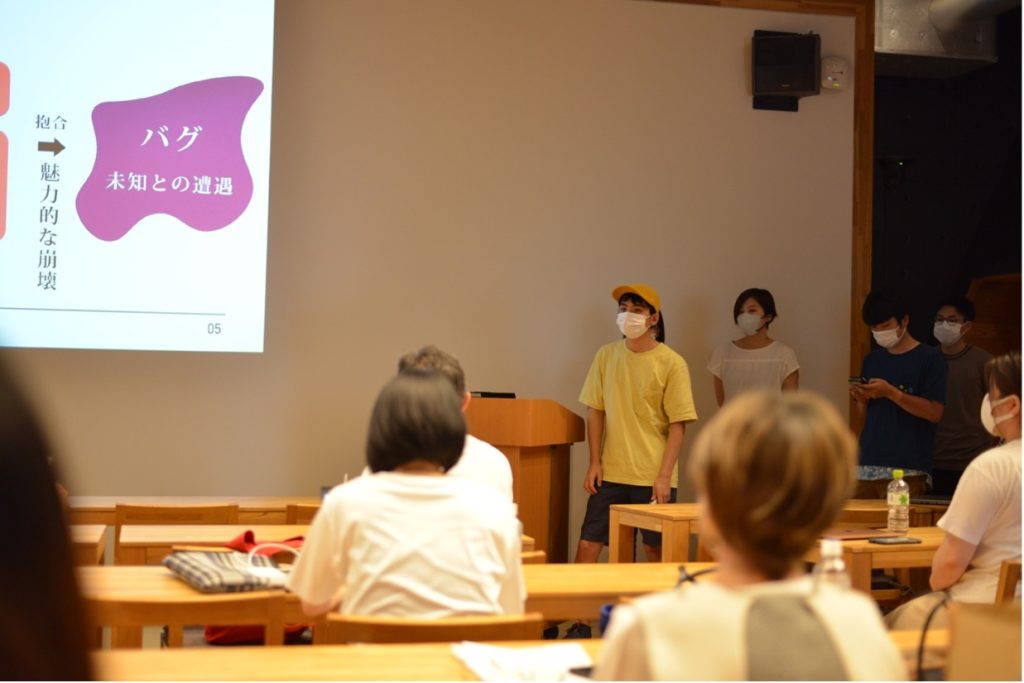
中間発表会の様子
講義からのインプットと講師陣のコメントをもとに、各チームが各々の方法で「ふるふれる」という抽象的なお題を具体的なコンセプトと造形に昇華させようと、試行錯誤を繰り広げました。会場は対面ならではの熱気に包まれ、連日夜遅くまで作業が続きました。
東工大三島ホールで行われた最終発表会では、各チームが趣向を凝らして作品のプレゼンテーションを行いました。今年は会場全体を上手く使った発表が多く、観客も作品を通して 6 日間の思考と試行のプロセスを追体験することができました。最終発表会には特別審査員として武蔵野美術大学の長澤忠徳学長(当時)と東工大の益一哉学長をお招きし、作品に対する講評をいただきました。両学長は、いくつかのパフォーマンス作品にも参加してくださいました。

長澤学長と益学長
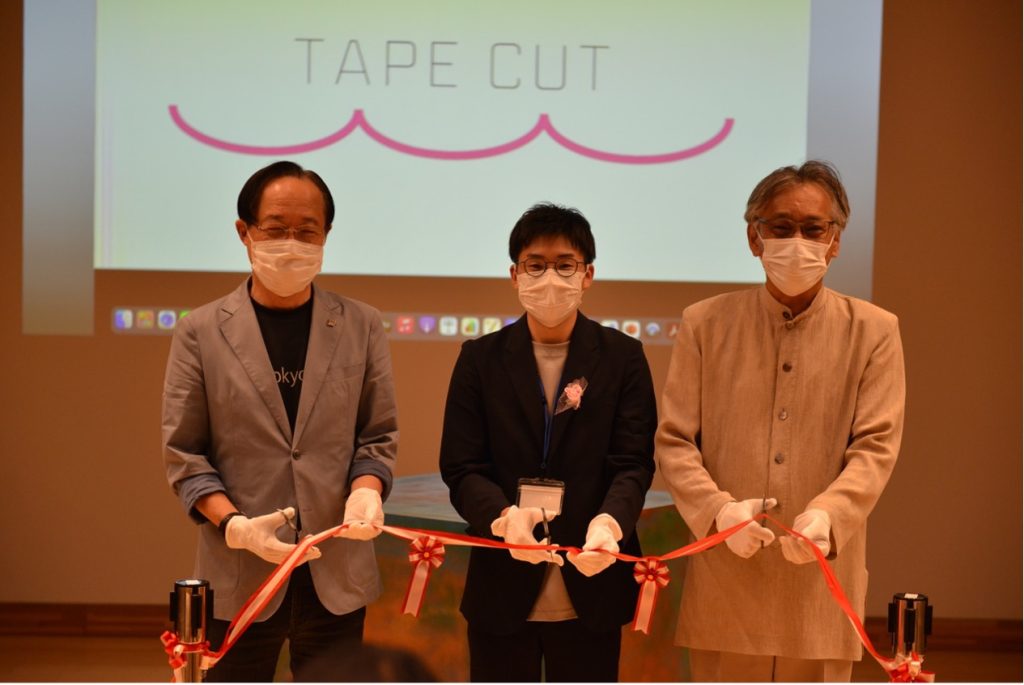
パフォーマンス作品に参加する両学長
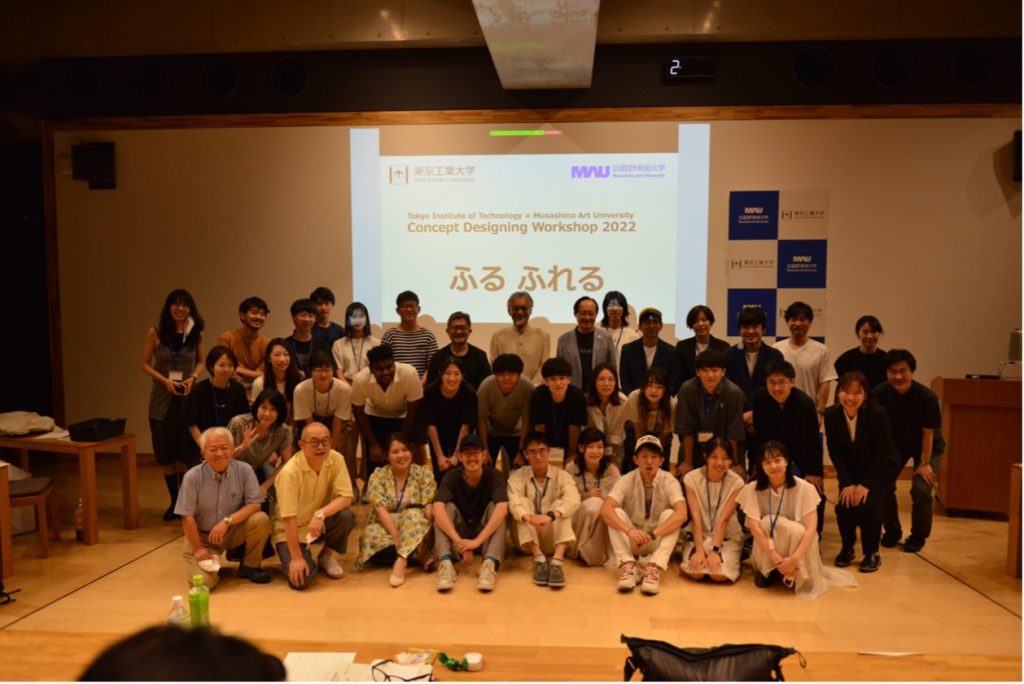
最終発表会にて
作品紹介
英語でコミュニケーションをとったグローバルチーム。「ふる ふれる」から「flu(感染)」「emotional(心にふれる)」「obsession(気がふれる)」を連想。そこから更に「Obsession (X) changes your perception of time(何かにハマると時間の捉え方が変わる)」との発想にいたった。造形物として、時間の違いを体感できる装置を制作した。
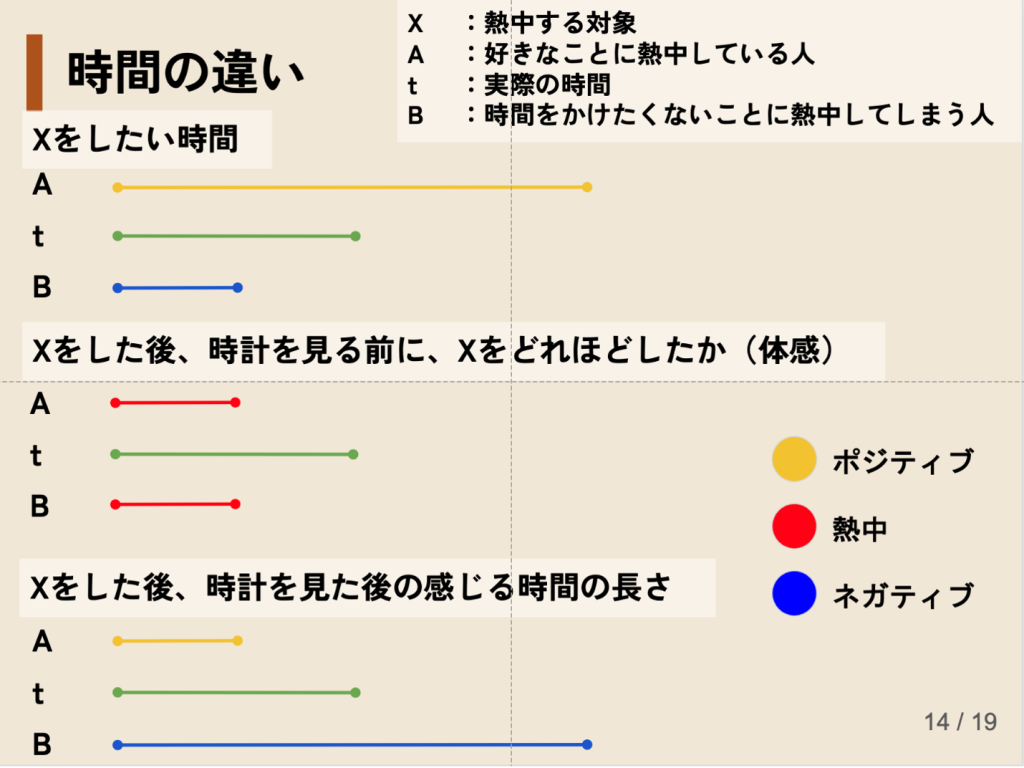
Obsession (X) changes your perception of time
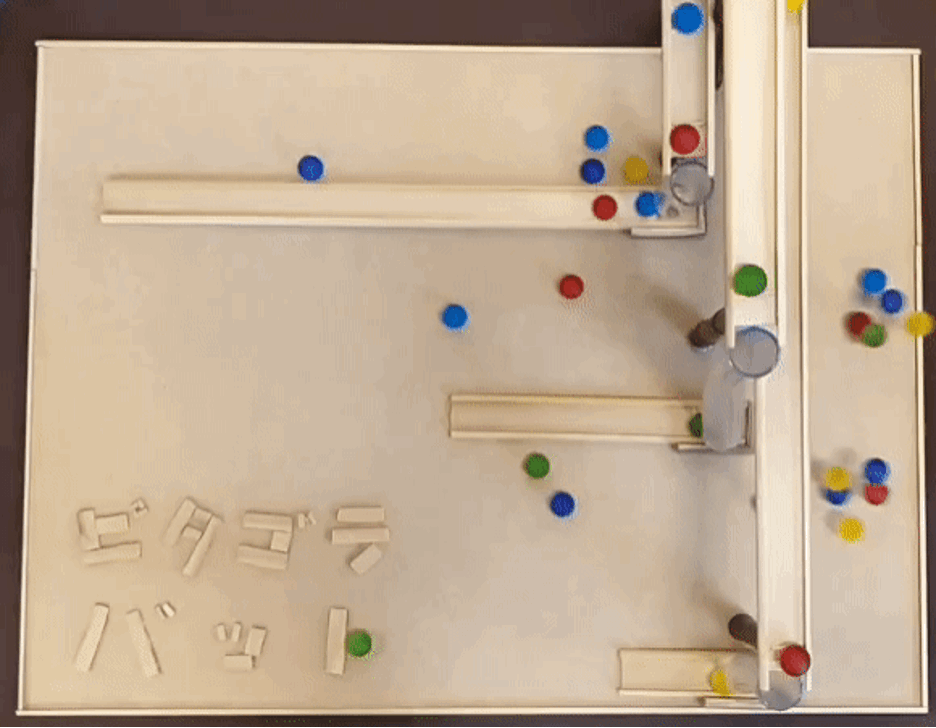
ピタゴラバット
「ふる ふれる」に見られる関係性に着目し、「ふる↔ふられる」は一方的だが、「ふる↔ふれられる」は相互的であることを発見。関係性を抽象化した結果、「線」を見出し、それをたまたま手元にあった「糸」に射影した。最終的には、チームメンバーと木などの自然物を糸でぐるぐる巻きにすることで、「巻かれることと巻くことの一体感と命のつながりに触れる感覚」に気がついた。東工大生が屋外で糸に巻かれる映像作品と巻いた糸のかたまりを作品として上梓した。
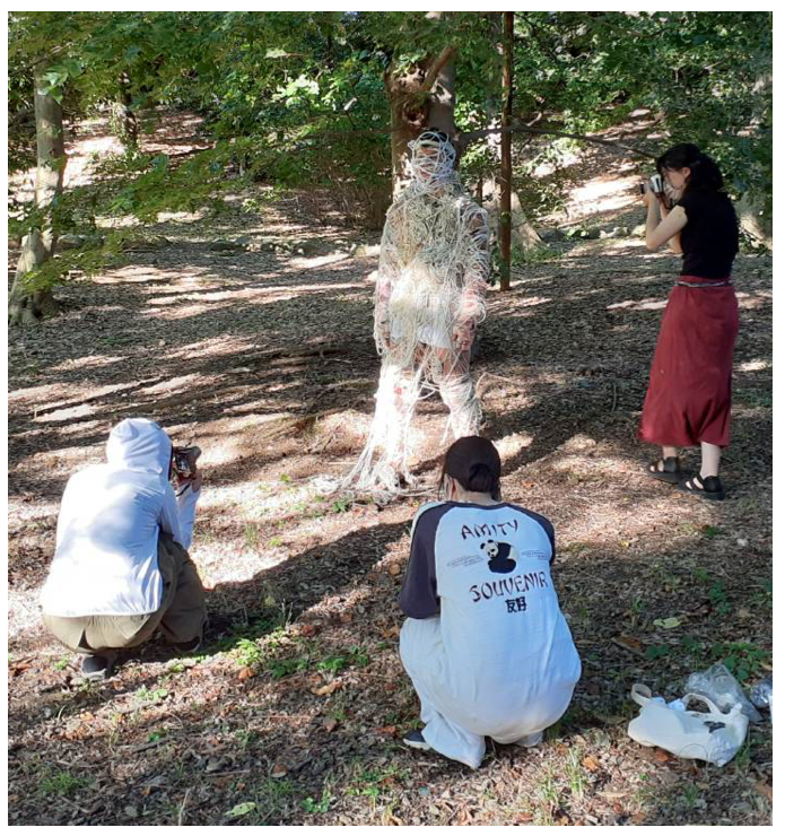
全員営善部
「ふる ふれる」から「単振」と「共振」を連想し、「境」(単振と共振の境、ふるとふれるの境)に行き着く。会場のあちこちに置かれた文章、絵、造形物を見たり、触ったり、嗅いだりすることで、知ると知らないの「境」、分かると分からないの「境」を表現したのではないかと思わせる作品を制作した。
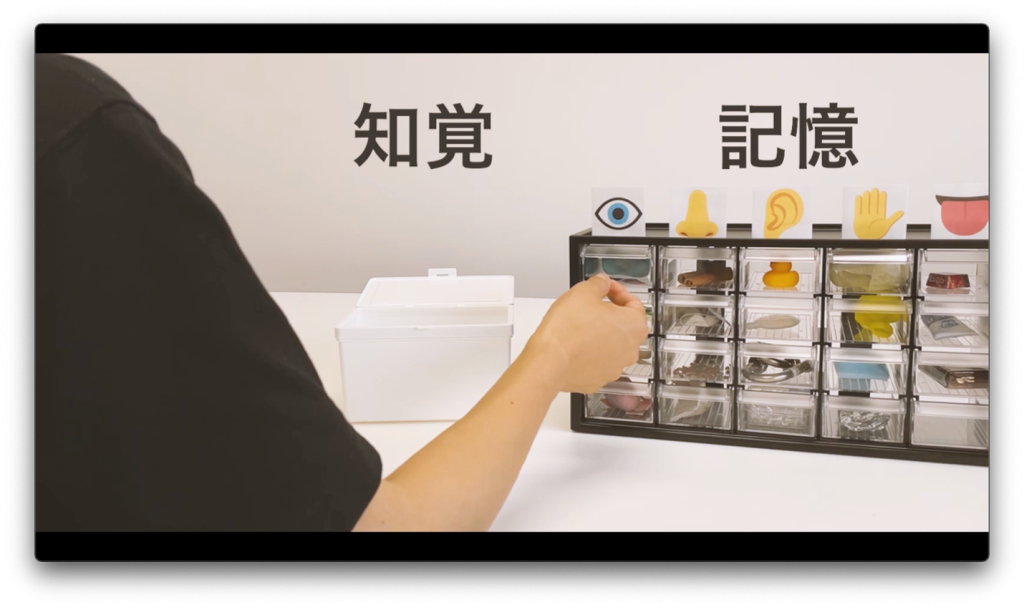
なんで なん
物理的に存在している「ふる」モノから、心に「ふれる」体験を想像し、儀式を創作。人々がライトがついた造形物を囲み、チームメンバーが起こす「ふる」にまつわる出来事があるごとに一歩ずつ前に進む。その出来事が心に「ふれたなぁ〜」と感じたらそのまま造形物の方を向いているが、感じなかったら造形物に背を向ける。不思議な空間を作り出すパフォーマンス作品。この儀式には両学長にも参加いただいた。
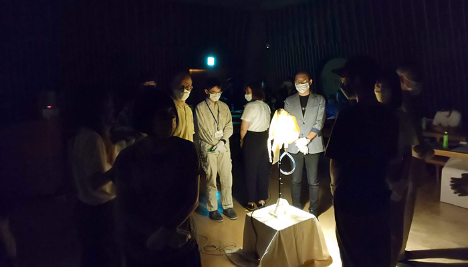

ルカラレルノ公園の儀式
「ふる ふれる」から連想した「魅力的な崩壊」を象徴した正方形のオブジェクトを制作。これは実は「再認式」という式典のための記念彫刻であり、この数年間コロナウイルス対応のために一つ飛ばしにされることが多かった椅子(距離)をネガティブなものではなく、ポジティブなものとして再認識するためのものなのである。そのため、会場にある紙(DNP 協賛)でラッピングされた椅子も作品の一部である。式典にはテープカットの儀式もあり、これには両学長にも協力いただいた。
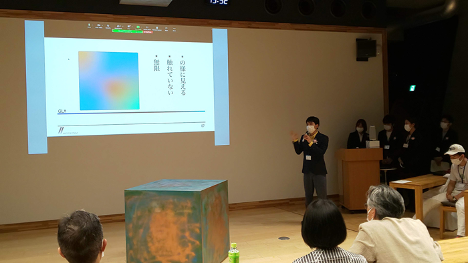
//(コメントアウト)のオブジェ
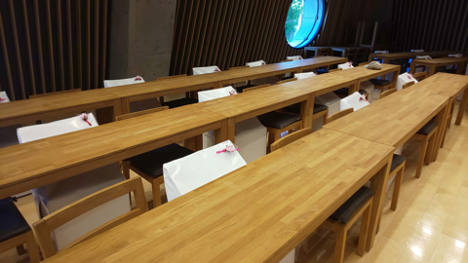
//(コメントアウト)がラッピングした椅子
参加学生の感想
「アートとか美術とか芸術とか、そういうものが苦手意識もあったし、よく分からないし、成績も最低だったけど、作るとか共有できるってこんなにたのしいんだって毎日涙が出そうなほど嬉しかった。ここまで繋がろうと意識を向けて、没頭・夢中・ゾーン・没入・還る、とかできたのが嬉しい。」
「ものを形にすることを日常としている人たちの考え方(抽象を抽象のまま扱っていく)や、自分の思い通りの形にするために最大限やれること全てやるという姿勢にとても刺激を受けた。また、役に立たなくてもいいからコンセプトが伝わるように余白を残しながら表現するという行為が非常に新鮮で学びが多かった。最後に、やはり時間をかけて努力して生み出したものは強度があるのだと感じた。何かを思い通りになるまで必死にこねくり回す大切さを久々に思い出した。」
「輪郭がない未完成なものを許容できた経験を得ました。私はこれまで、定義できないものや、考え抜いてもそれが何かよくわからないものと、真剣に対峙したことがありませんでした。このワークショップ中も、序盤はよくわからないテーマが受け入れ難かったです。ですが、それらを少しずつ咀嚼していくことで、よくわからないものは既知の詰め合わせなのかもしれないと思うようになりました。」
「『コンセプト』と『表現』の二つの関係やそれぞれについて、東工大生の視点から意見を聞けたことによって、美大の中にいたら疑問を持たなかったことについて考えることができた。単に自分の作りたいものを作るのではなく他人と協働してゼロに近い状態から作るということ経験できた」
「コミュニケーションを通して、普段の自分の制作で感じている悩みを解消する手がかりを得られた。感覚でやっていることを言葉にすることの必要性と、一方で、物質と向き合うことで思考が進められていくものづくりの基本を、グループワークの中で改めて実感し、今後の自分の制作に生かしていこうと思えた。」
「1 週間というある種のタイムリミットとテーマに応えていく過程という 2 つの圧力を感じたおかげか、初めましての人に対してこんなに積極的にコミュニケーションをとろうとしたのは初めてだった。収穫としては、どうみられたいという欲求よりも、どうにかして伝えたいという気持ちがこの 6 日間優っていたこと。コミュニケーションに対するモチベーションの違いに気づけた。」
まとめ
2022年度のコンセプト・デザイニングをご紹介しました。次の記事では、もう1つのサイエンス/テクノロジー&アート/デザイン活動として、アルスエレクトロニカ・フェスティバル学生派遣をご紹介します。
2022 Science/Technology & Art/Design Activity Report
English Summary
In FY2022, the Nohara Laboratory at the Tokyo Institute of Technology’s Transdisciplinary Science and Engineering Department organized two educational activities that combined science/technology and art/design. One of these activities was the joint workshop called “Concept Designing” held in collaboration with Musashino Art University. The workshop aimed to bring together students from both institutions to create sculptural objects based on a given theme, promoting interdisciplinary collaboration and creativity.
The workshop took place from July 25 to July 30, 2022, and involved 13 students from Tokyo Tech and 11 students from Musashino Art. The participants were divided into five teams, one of which was a global team that communicated in English. The theme for the workshop was “Furufufuru,” a Zen-like concept that allowed for various interpretations and artistic expressions.
The workshop schedule consisted of lectures, group discussions, visits, and production sessions. The first three days included lectures on design thinking, communication, artistic thinking, and carbon neutrality. Group discussions and presentations took place during the following days, where each team worked on translating the abstract theme into concrete concepts and forms. The venue for the workshop shifted from Musashino Art University’s Ichigaya Campus to Tokyo Tech’s Ookayama Campus.
At the final presentation held in Tokyo Tech’s Mishima Hall, each team showcased their artwork, which represented their interpretation of the theme. The presentations were elaborate, utilizing the entire hall to immerse the audience in the creative process. Special jury members, including the presidents of Musashino Art University and Tokyo Tech, provided feedback and participated in performance pieces.
The teams’ artworks varied in concept and execution. One team created a device to experience the changing perception of time, while another explored the relationship between single vibrations and resonance. A team focused on the ritualistic experience of touching the mind through physical objects, and another created a sculpture symbolizing “attractive collapse.” Each artwork reflected the team’s interpretation of “Furufufuru” and demonstrated the fusion of science/technology and art/design.
The participating students shared their experiences and insights from the workshop. A Tokyo Tech student expressed joy in being able to create and share their work, highlighting the importance of embracing unfamiliar concepts and the strength that comes from dedicated effort. The student also learned from the art students’ approach of leaving blank spaces and conveying concepts without utility. Another student appreciated the opportunity to collaborate with students from a different discipline and gained new perspectives on concept and expression.
A Musashino Art student acknowledged the workshop’s impact on their artistic practice, realizing the necessity of verbalizing sensory experiences and the value of facing materials in the creative process. The student also highlighted the importance of active communication and how it can outweigh the desire for recognition. The workshop provided a platform for questioning and collaborating on creative ideas that they wouldn’t have experienced within their art college.
Overall, the Tokyo Institute of Technology x Musashino Art University joint workshop ‘Concept Designing’ in FY2022 successfully fostered interdisciplinary collaboration, encouraged creative thinking, and provided valuable experiences for students from both institutions. The workshop allowed participants to explore the fusion of science/technology and art/design, ultimately creating unique artworks that showcased their diverse interpretations of the given theme.

